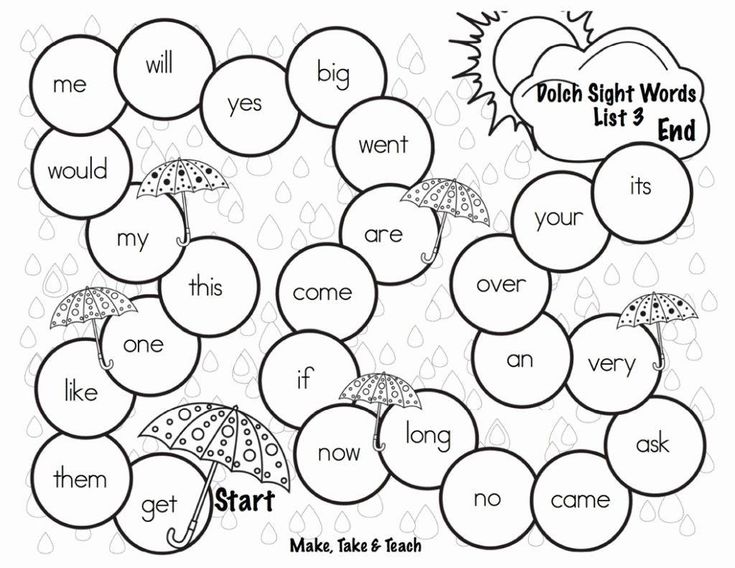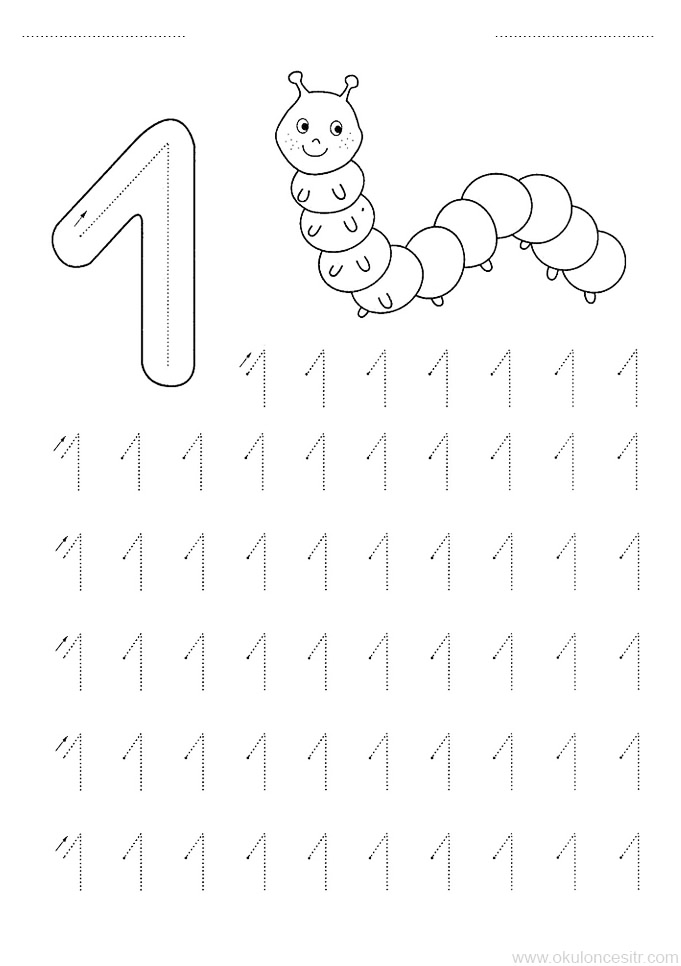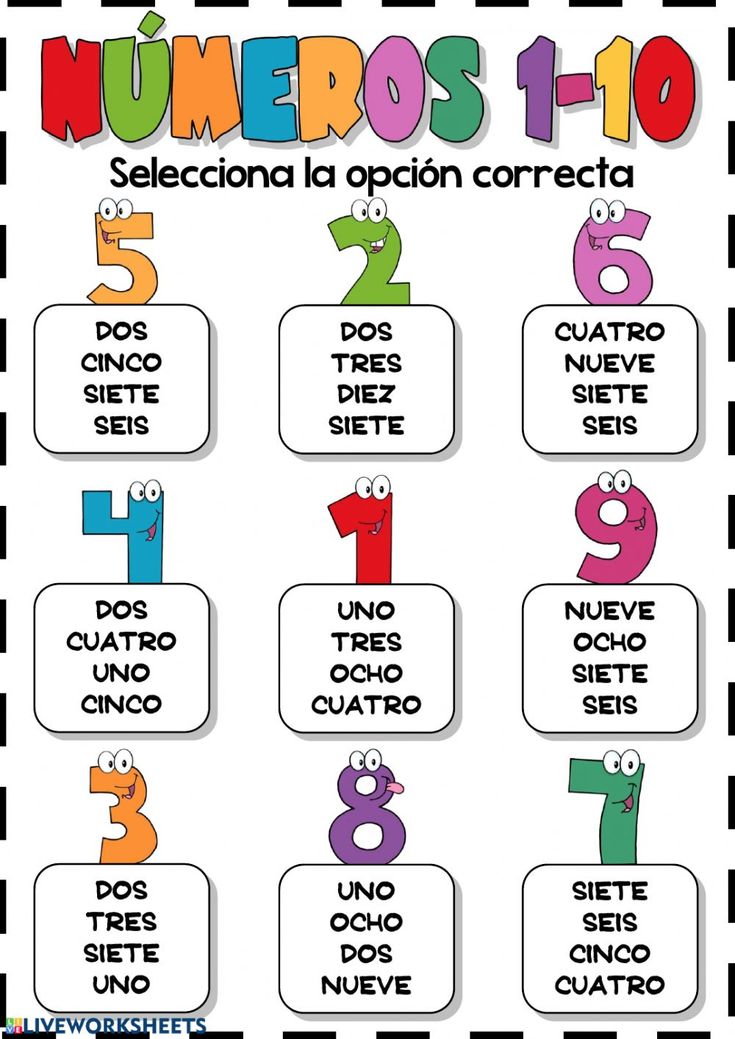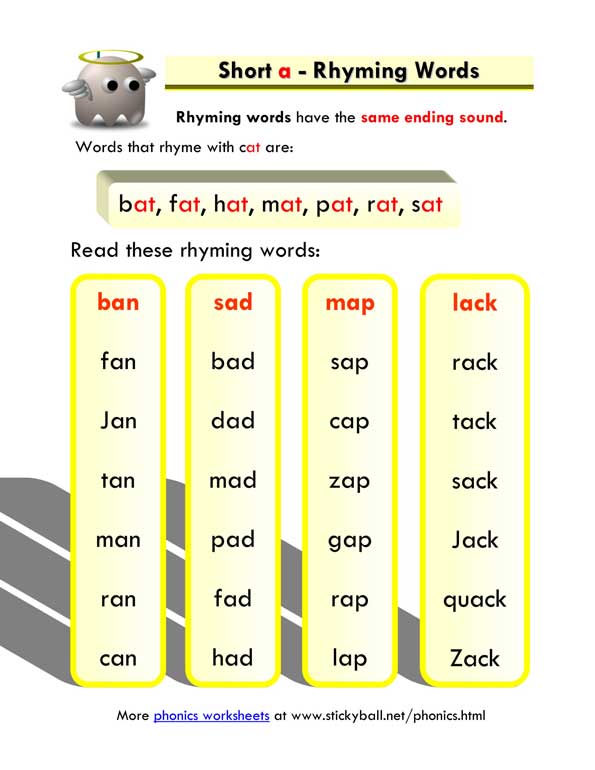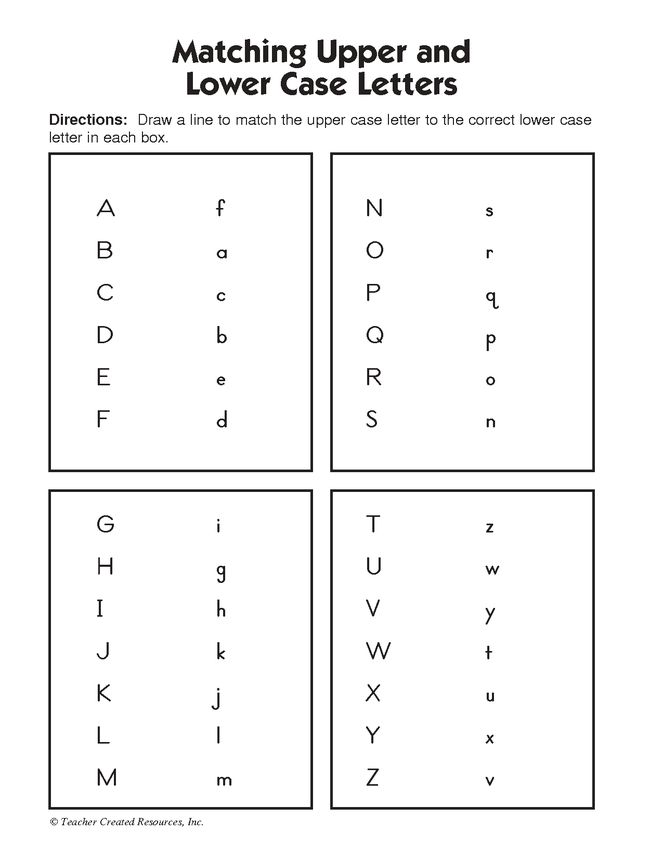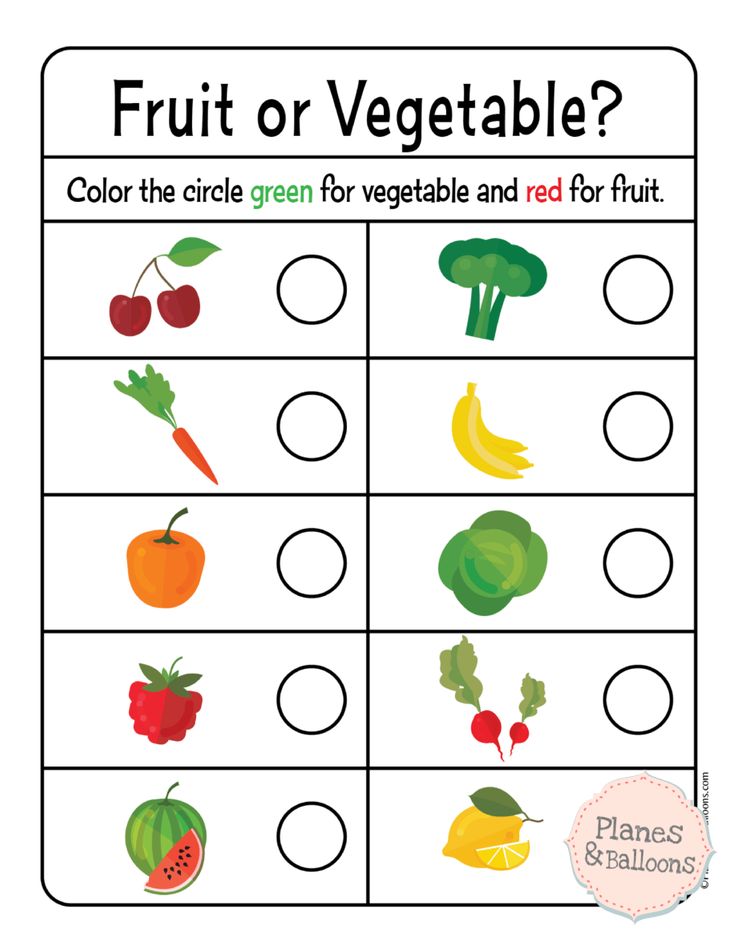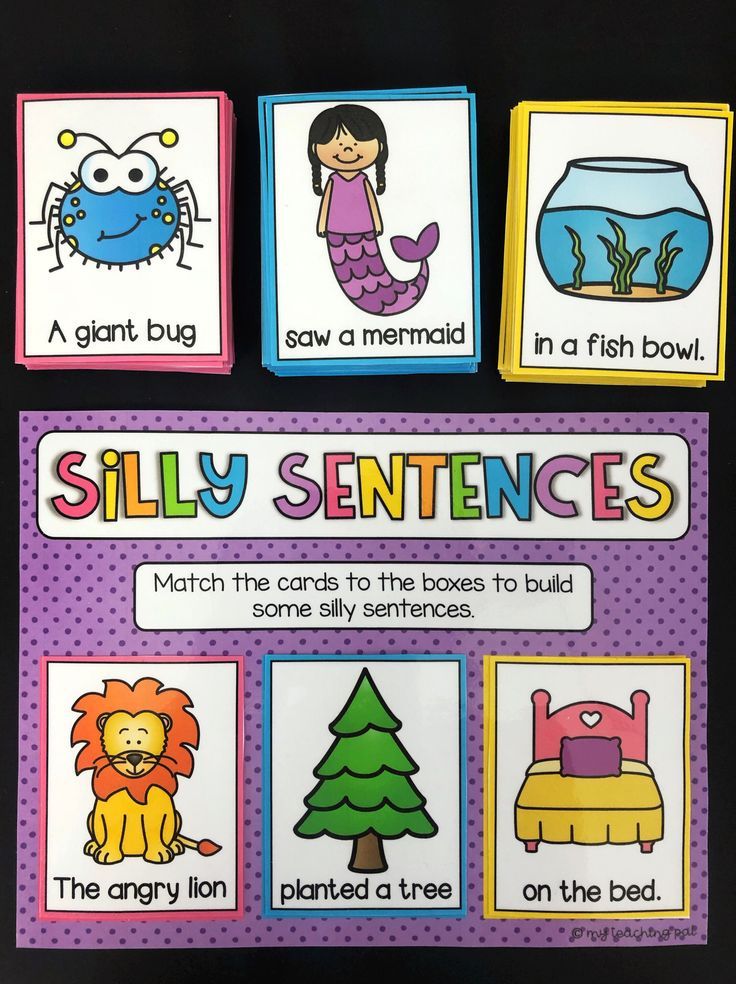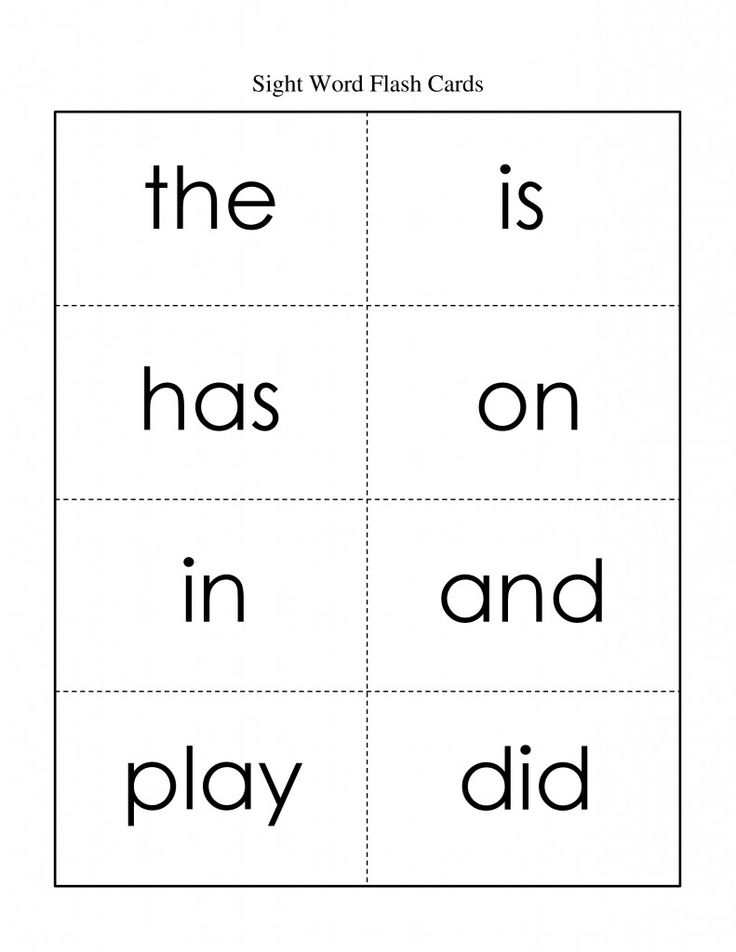Games for sight words
Sight Words Bingo | Sight Words: Teach Your Child to Read
- Overview
- Materials
- Activity
- Confidence Builder
- Extension
- Assessment
- Printable Bingo Cards
- Additional Resources
- Questions and Answers
Sight Words Bingo is our most popular sight words game. It takes the traditional Bingo game and replaces the numbers with words, motivating the child to read the sight words so they can play (and win!) the game. Children love playing Sight Words Bingo, and it is a great way to provide repetition opportunities in a large group setting.
Image: Sight Words Bingo
Each child gets his or her own Bingo Card with a set of words printed on a grid on the face of the card. The adult calls out words one at a time, and each time the child hears a word that is on their card, they cover the word with a marker. When the markers line up to make a complete row (horizontal, vertical, or diagonal), the child yells “Bingo!” and they are declared the winner of that round.
↑ Top
To play Sight Words Bingo, you just need Bingo cards and some markers:
- Bingo Cards Generator
- Printer paper or cardstock (approximately 110 lb / 200 gsm)
- Printer
- Bingo markers or counters (approximately 20 per player)
Use our Bingo Card Generator to produce one Bingo Card for each child, and print them out (preferably on a heavy-duty cardstock paper). You want to use a mix of newer words that you are currently working on, as well as some words you need to review. The Bingo Card Generator will also create a word list that you can use to help you run the game.
Video: Making Sight Words Bingo Cards
If you will be creating multiple sets of Bingo cards, it is useful to label each set on the back so that you can easily sort out the sets if they get jumbled together.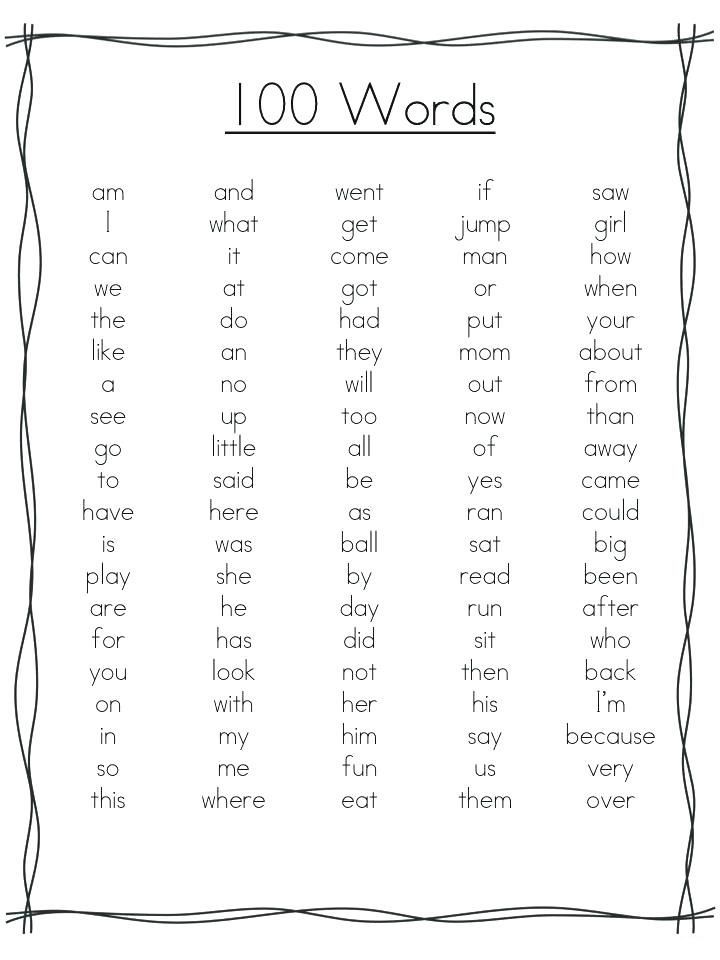 (We learned this the hard way!)
(We learned this the hard way!)
You need some Bingo counters to mark each of the squares as the child plays the game. The counters pictured were purchased, but you can also use pennies, bread bag tags, pebbles, or anything else you have handy. If purchasing plastic markers, we prefer the markers that are plain and single-colored; multiple colors often prove too much of a distraction.
Some people use a Bingo Marker that the child uses to color the square instead of a counter. This gives the children a bit of practice gripping the pens, but it also requires you to hand out fresh Bingo cards for each round.
↑ Top
Each child is given a Bingo Card and a handful of markers (approximately 20 per child). The children are given 90 seconds to read all the words on their card. If there are any weak readers in the class, the adult should take this time to work with those children to help them read all the words on their card; otherwise they are going to be lost for the rest of the game.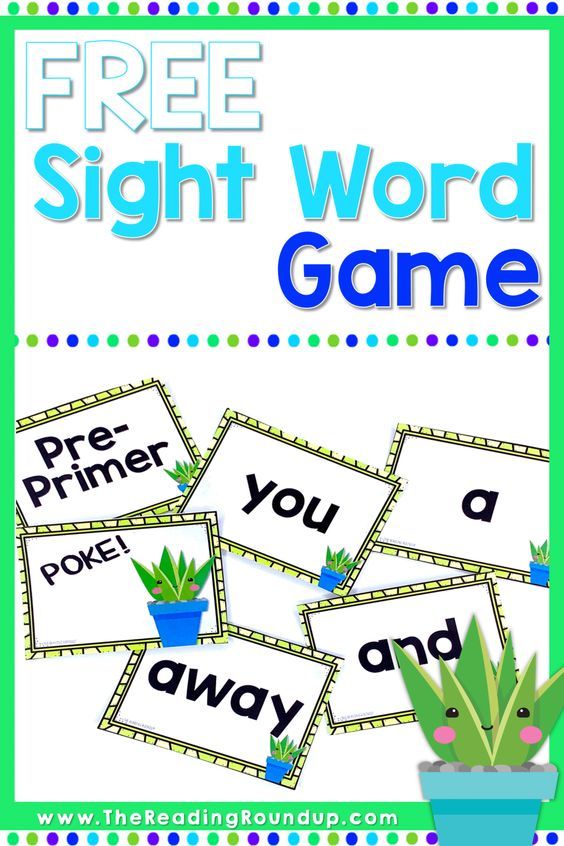
Video: Playing Sight Words Bingo
The adult takes the word list and picks a word at random from the list. The adult reads out the word, uses it in a sentence, then reads out the word again. For example, if the word was plate, the adult could call out:
Adult: Plate. I ate dinner on a round plate. Plate.
The adult then marks off the word from the list to help them remember which words have been called already. The adult takes a long pause between each word to give the children time to play the game.
When the children hear a word called out, they are supposed to look at their Bingo card and see if they can find the word on the card (not every word is on every card). If they find the word, they place a counter on that square.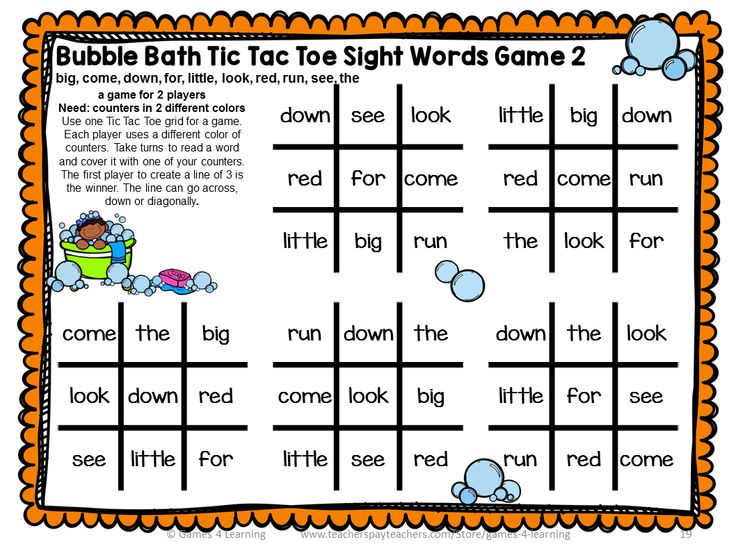
To win, a child has makes an entire line (five vertical, horizontal, or diagonal squares). For the purposes of making a line, the center space (free space) is considered to be automatically filled. When a child has a line, they yell out “BINGO!”
When a child claims to be the winner, ask her to read out her four or five words that made a line (more reading practice), and check these words on her card and on your word list to make sure she actually heard and marked the words correctly. If she played correctly, that child is declared the winner, and we move on to playing the next round.
We start a new round by having each child pass their card to their left, so that each child has a new card and is given the opportunity to read new words.
↑ Top
You can make the game easier by reducing the number of squares from the standard 5-by-5 to 4-by-4 or even 3-by-3, and by using a majority of older, more familiar words.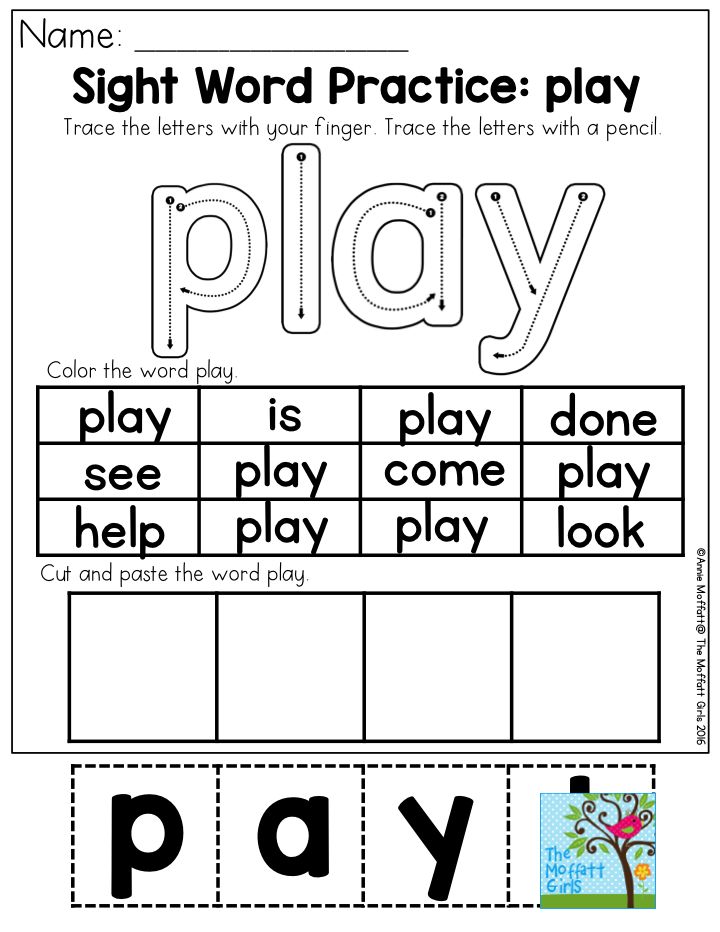 You can also allow each child to retain their card for a few rounds so they become more familiar with their cards. As we mentioned, you can help a weak reader at the start of the game by having them read the words to you, correcting any mistakes they have made.
You can also allow each child to retain their card for a few rounds so they become more familiar with their cards. As we mentioned, you can help a weak reader at the start of the game by having them read the words to you, correcting any mistakes they have made.
↑ Top
You can make the game harder by using a majority of newer and less familiar words. You can also add some time pressure and increase the pace at which you read out new words, so that the children have to read the words more quickly. Speeding up the pace of the game helps children master the words, as they are forced to truly read by sight and cannot rely on crutches such as sounding out the initial letters.
Alternately, you can make the game last longer by not declaring a winner until a child covers all the squares on their Bingo card.
↑ Top
Bingo is not the best game for doing an assessment of individual children.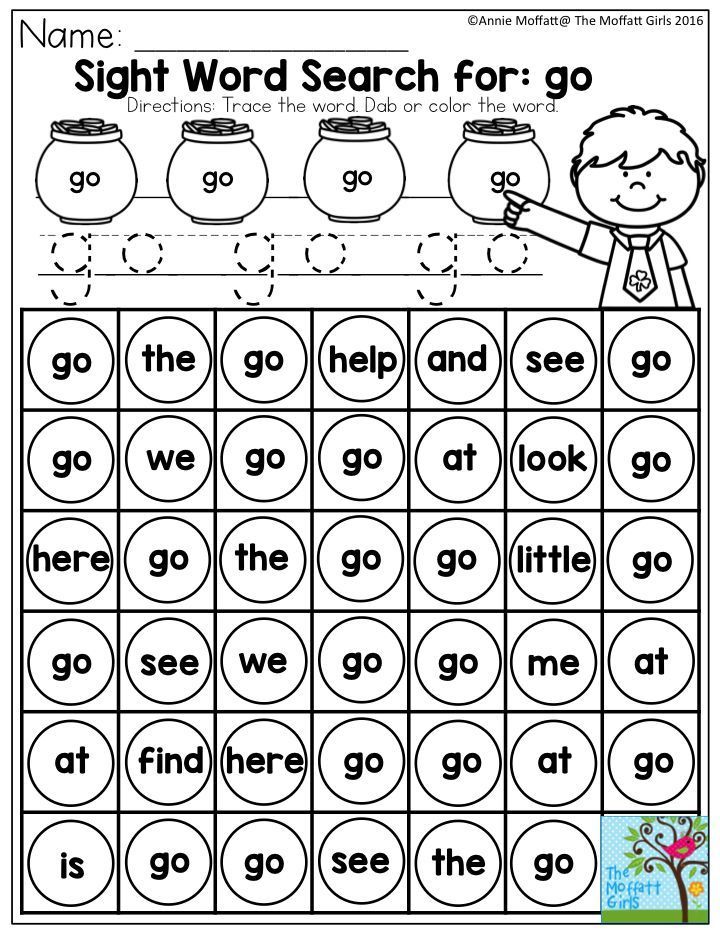 But by observing the whole classroom, you can get a sense for which words are flummoxing the children and need more work, and the words that are becoming too easy and should be removed from rotation because the children have already mastered them.
But by observing the whole classroom, you can get a sense for which words are flummoxing the children and need more work, and the words that are becoming too easy and should be removed from rotation because the children have already mastered them.
↑ Top
Remember that if you are playing with multiple children, each child needs their own card that is different from everyone else’s. Otherwise, everyone will get BINGO at the same time! The pre-made templates below include 30 different Bingo cards made from the same word list, so you can use them for a whole classroom of kids or just one child playing multiple games.
7.1 Custom Sight Words Bingo Cards
Use the Sight Words Bingo Card Creator to create your own custom set of Bingo cards. This generator lets you select from both existing sight words lists (e.g., Dolch and Fry) as well as allowing you to add custom words (e.g., allowing you to add students’ names or words relevant to a unit you are currently doing).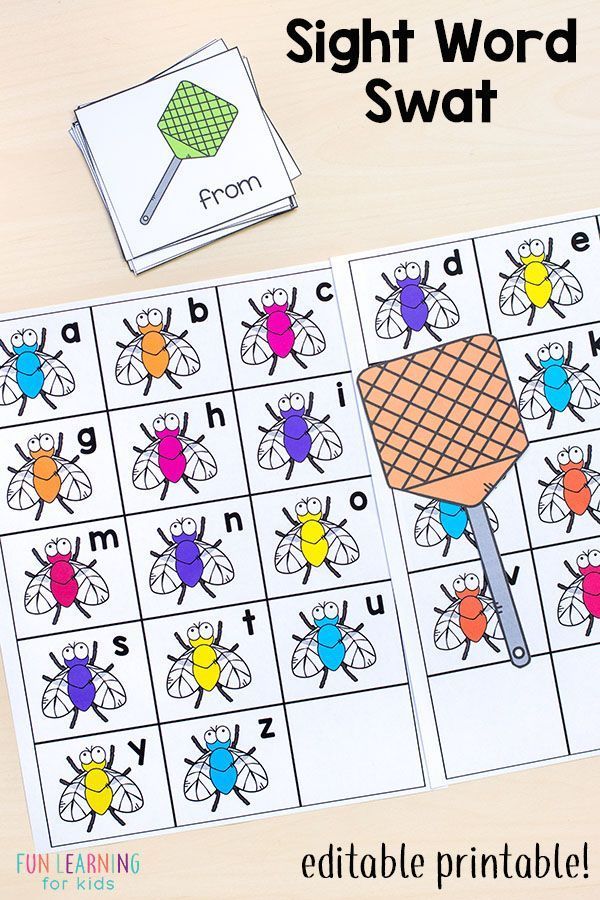 The creator will also create a teacher’s word list to help you run the game.
The creator will also create a teacher’s word list to help you run the game.
7.2 Blank Bingo Card Templates
- Blank 5×5 Bingo Cards (Write in your own words)
- Blank 4×4 Bingo Cards (Write in your own words)
- Blank 3×3 Bingo Cards (Write in your own words)
7.3 Dolch Sight Words Bingo Cards
7.3.a Dolch Sight Words 5×5 Bingo Cards
- Pre-K Dolch Words (40 words)
- Kindergarten Dolch Words (52 words)
- 1st Grade Dolch Words (41 words)
- 2nd Grade Dolch Words (46 words)
- 3rd Grade Dolch Words (41 words)
- Noun Dolch Words (95 words)
7.3.b Dolch Sight Words 4×4 Bingo Cards
- Pre-K Dolch Words (40 words)
- Kindergarten Dolch Words (52 words)
- 1st Grade Dolch Words (41 words)
- 2nd Grade Dolch Words (46 words)
- 3rd Grade Dolch Words (41 words)
- Noun Dolch Words (95 words)
7.
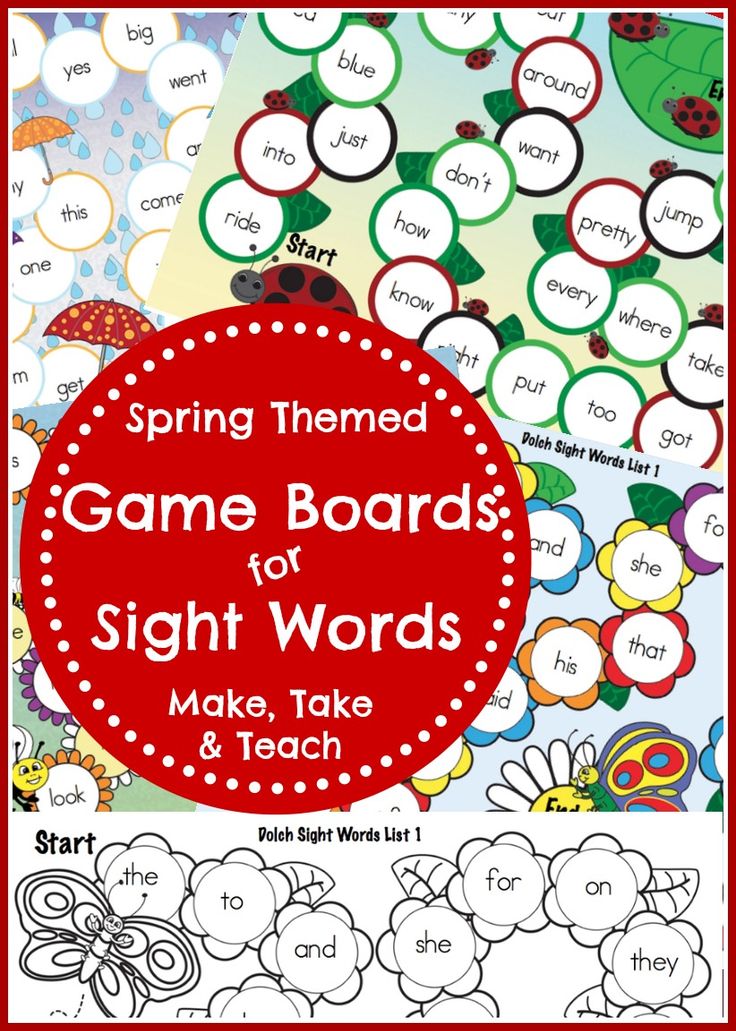 3.c Dolch Sight Words 3×3 Bingo Cards
3.c Dolch Sight Words 3×3 Bingo Cards- Pre-K Dolch Words (40 words)
- Kindergarten Dolch Words (52 words)
- 1st Grade Dolch Words (41 words)
- 2nd Grade Dolch Words (46 words)
- 3rd Grade Dolch Words (41 words)
- Noun Dolch Words (95 words)
7.4 Fry Sight Words Bingo Cards
7.4.a Fry Sight Words 5×5 Bingo Cards
- 1st 100 Fry Words (100 words)
- 2nd 100 Fry Words (100 words)
- 3rd 100 Fry Words (100 words)
- 4th 100 Fry Words (100 words)
- 5th 100 Fry Words (100 words)
- 6th 100 Fry Words (100 words)
- 7th 100 Fry Words (100 words)
- 8th 100 Fry Words (100 words)
- 9th 100 Fry Words (100 words)
- 10th 100 Fry Words (100 words)
7.4.b Fry Sight Words 4×4 Bingo Cards
- 1st 100 Fry Words (100 words)
- 2nd 100 Fry Words (100 words)
- 3rd 100 Fry Words (100 words)
- 4th 100 Fry Words (100 words)
- 5th 100 Fry Words (100 words)
- 6th 100 Fry Words (100 words)
- 7th 100 Fry Words (100 words)
- 8th 100 Fry Words (100 words)
- 9th 100 Fry Words (100 words)
- 10th 100 Fry Words (100 words)
7.
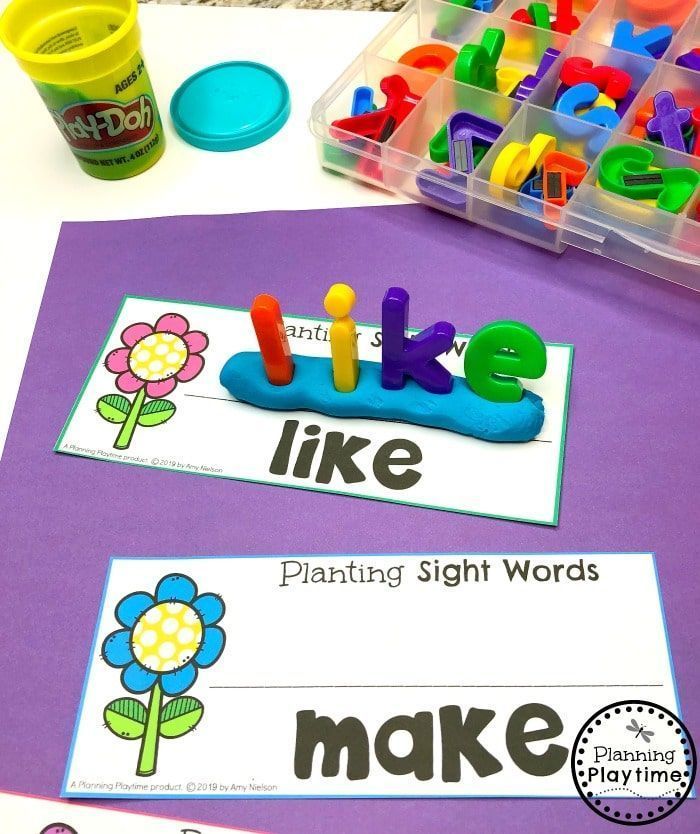 4.c Fry Sight Words 3×3 Bingo Cards
4.c Fry Sight Words 3×3 Bingo Cards- 1st 100 Fry Words (100 words)
- 2nd 100 Fry Words (100 words)
- 3rd 100 Fry Words (100 words)
- 4th 100 Fry Words (100 words)
- 5th 100 Fry Words (100 words)
- 6th 100 Fry Words (100 words)
- 7th 100 Fry Words (100 words)
- 8th 100 Fry Words (100 words)
- 9th 100 Fry Words (100 words)
- 10th 100 Fry Words (100 words)
7.5 Top 150 Written Words Bingo Cards
7.5.a Top 150 Written Words 5×5 Bingo Cards
- 1st 50 Words (50 words)
- 2nd 50 Words (50 words)
- 3rd 50 Words (50 words)
7.5.b Top 150 Written Words 4×4 Bingo Cards
- 1st 50 Words (50 words)
- 2nd 50 Words (50 words)
- 3rd 50 Words (50 words)
7.5.a Top 150 Written Words 3×3 Bingo Cards
- 1st 50 Words (50 words)
- 2nd 50 Words (50 words)
- 3rd 50 Words (50 words)
To download a template, right-click and select Save As.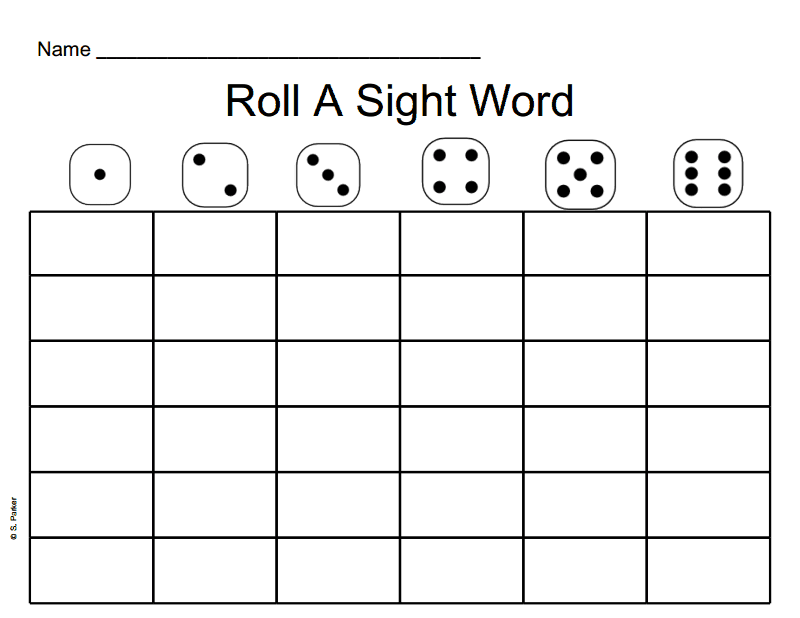
These materials are provided under the Creative Commons Attribution 3.0 Unported License. Essentially, this means you can do whatever you want with the resources, provided you leave the attribution hallmark on the resources. You may use these materials in the classroom, at home, as part of a for-profit tutoring business, to wrap fish, or for any other purpose your heart desires. You do not need to contact us for permission to use the materials. We want you to use them!
↑ Top
- ABCya.com
↑ Top
Leave a Reply
Sight Words Go Fish | Sight Words: Teach Your Child to Read
- Overview
- Materials
- Activity
- Confidence Builder
- Assessment
- Printable Go Fish Cards
- Questions and Answers
Sight Words Go Fish is a vocabulary-themed variation of the classic Go Fish card game, for 2-4 players.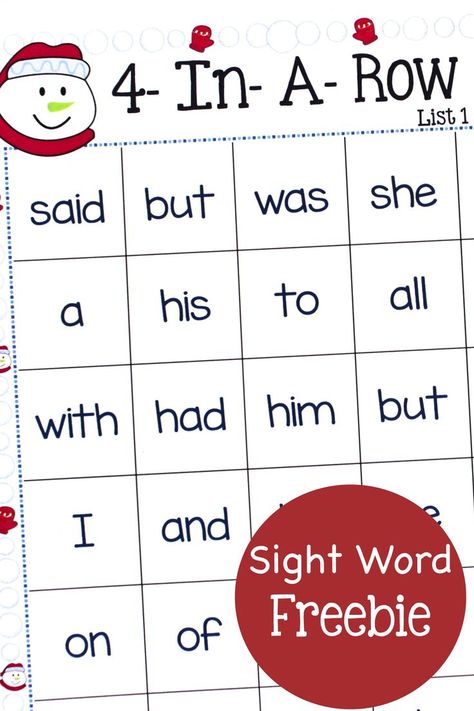 Introducing this game is easiest when the children already have experience playing the traditional Go Fish game, because they will already understand the game dynamics and can focus their attention on the reading aspect. This is of particular importance for younger children, who can get overwhelmed with having to learn a new game and new words at the same time.
Introducing this game is easiest when the children already have experience playing the traditional Go Fish game, because they will already understand the game dynamics and can focus their attention on the reading aspect. This is of particular importance for younger children, who can get overwhelmed with having to learn a new game and new words at the same time.
The goal is to collect more pairs of matching cards than anyone else. Children must read the sight word on the card they wish to play and be able to read the words that are requested by other players. It is another fun way to give children extensive exposure to a variety of sight words.
Image: Sight Words Go Fish
↑ Top
For Sight Words Go Fish, you will make and use a set of cards with various word pairs. The number of pairs depends on how many words you select when creating the cards. You can also remove some pairs from your deck of cards to make it a more manageable size.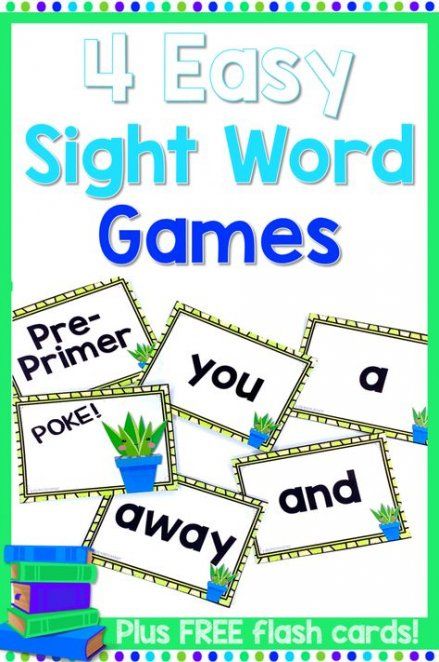
Use our Go Fish Card Generator to create a set of cards and print them out, preferably on heavy-duty cardstock paper. You will want to use a mix of newer words that the children have not yet mastered and familiar words that could use some review.
↑ Top
These instructions are for a game with 3-4 players. Sight Words Go Fish can also be played easily with just two players.
Video: How to Play Sight Words Go Fish
Deal 5 cards to each player (7 cards each if there are only 2 players), then place the remaining cards face down in the middle of the circle formed by the players. All the players look at their cards but do not reveal them to each other.
Player A takes the first turn. Player A selects one of her cards and reads the word on it out loud, moving her index finger from left to right underneath the letters as she reads.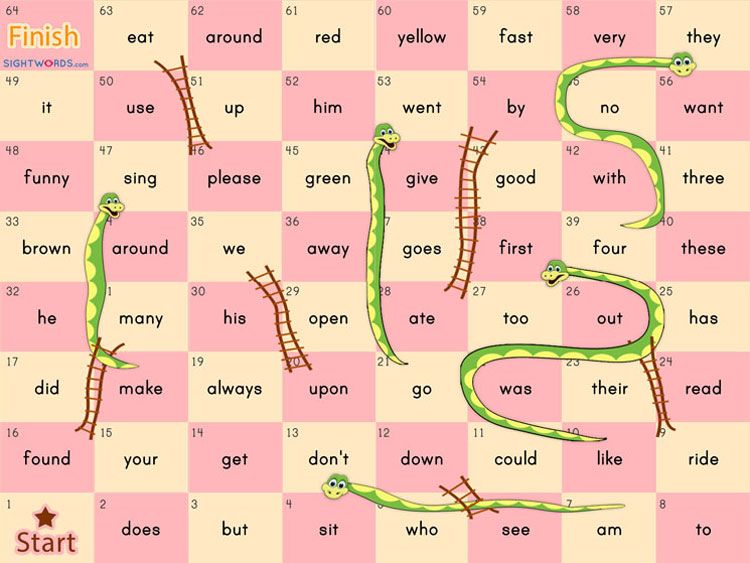 (An adult should demonstrate this reading technique at the start of the game to teach or remind children how best to read the word.)
(An adult should demonstrate this reading technique at the start of the game to teach or remind children how best to read the word.)
Player A then selects another player and asks him, “Player C, do you have any cards with the word BEFORE?” If Player C has a card with that word, he must say “Yes, I have a card with the word BEFORE,” and hand it to Player A, who then gets another turn. If any player struggles with reading or pronouncing a word, take a moment to go through the sight words correction to reinforce the correct pronunciation.
If Player C does not have any of the requested card, he shouts, “Go Fish!” Player A must then draw a card from the stack. If the drawn card has the word she was looking for, she shows the card and gets to take another turn. Otherwise, her turn ends, and the child who said “Go Fish” gets the next turn.
If a player collects both cards of a particular word pair, he puts them in a face-up stack in front of him. The game continues until someone has no cards left or the face-down stack runs out. The winner is the player with the most pairs of matching cards.
The game continues until someone has no cards left or the face-down stack runs out. The winner is the player with the most pairs of matching cards.
↑ Top
To make the game a little easier, especially for a younger child, simply use fewer pairs of cards.
↑ Top
Observe the game, whether it’s watching your own child in your 2-player game or observing a group of students in a 4-player game. Make note of which words the children have mastered, and which ones are still a bit of a struggle. Be on the lookout for individual children who are struggling with several of the words.
A child is considered to have mastered the sight words in this activity when she can consistently recognize and read all the word cards in her hand, with confidence and without any noticeable hesitation.
↑ Top
Create your own custom Go Fish Cards or use some of our pre-made templates below.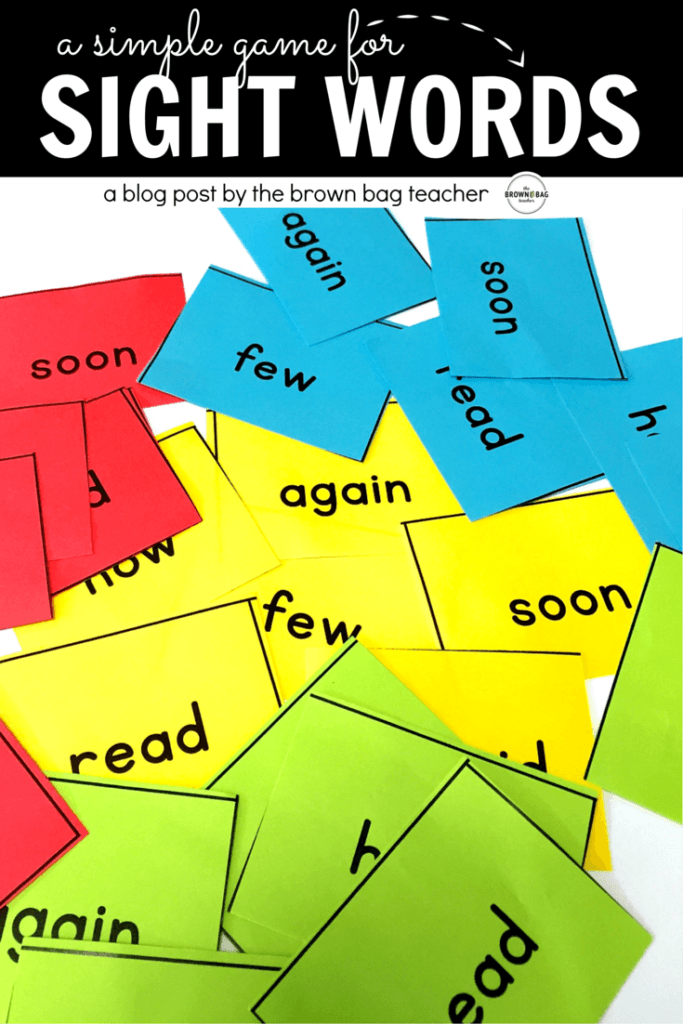
6.1 Blank Go Fish Card Templates
- Blank Go Fish Card Templates (Write in your own words)
6.2 Dolch Sight Words Go Fish Cards
- Pre-K Dolch Words (40 words)
- Kindergarten Dolch Words (52 words)
- 1st Grade Dolch Words (41 words)
- 2nd Grade Dolch Words (46 words)
- 3rd Grade Dolch Words(41 words)
- Noun Dolch Words (95 words)
6.3 Fry Sight Words Go Fish Cards
- 1st 100 Fry Words (100 words)
- 2nd 100 Fry Words (100 words)
- 3rd 100 Fry Words (100 words)
- 4th 100 Fry Words (100 words)
- 5th 100 Fry Words (100 words)
- 6th 100 Fry Words (100 words)
- 7th 100 Fry Words (100 words)
- 8th 100 Fry Words (100 words)
- 9th 100 Fry Words (100 words)
- 10th 100 Fry Words (100 words)
6.4 Top 150 Written Words Go Fish Cards
- 1st 50 Words (50 words)
- 2nd 50 Words (50 words)
- 3rd 50 Words (50 words)
To download a template, right-click and select Save As.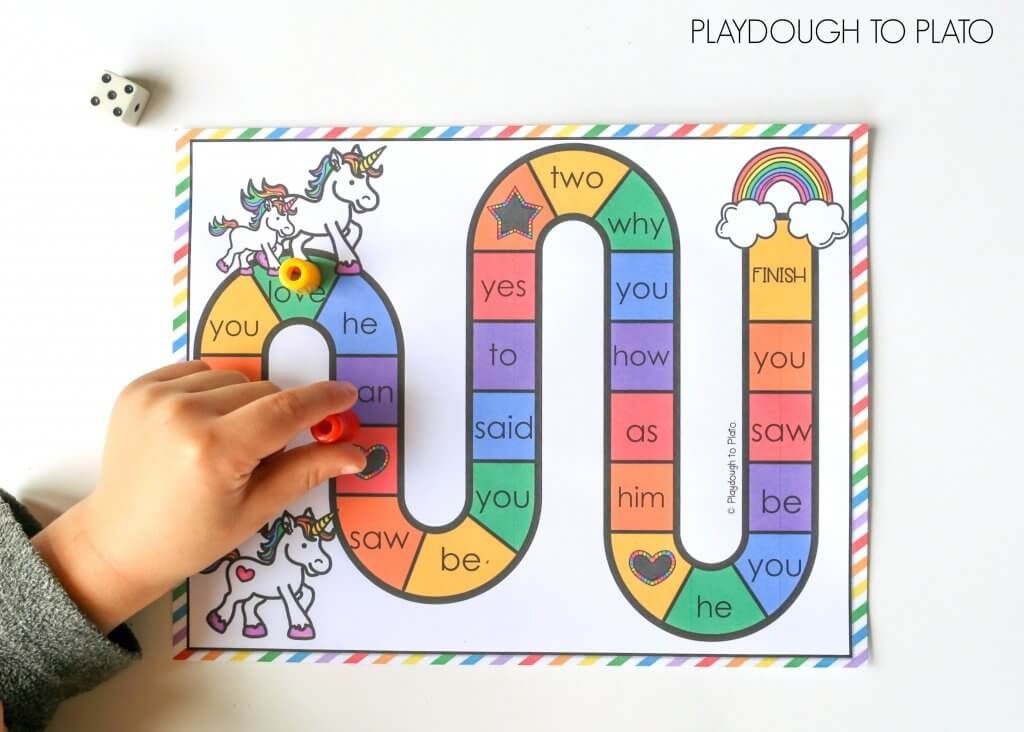
These materials are provided under the Creative Commons Attribution 3.0 Unported License. Essentially, this means you can do whatever you want with the resources, provided you leave the attribution hallmark on the resources. You may use these materials in the classroom, at home, as part of a for-profit tutoring business, or for any other purpose. (Except starting forest fires. That’s bad.) You do not need to contact us for permission to use the materials. We want you to use them!
↑ Top
Leave a Reply
Eye games (for children aged 3-6)
Diamond eye
The physiological development of a child's eye ends at about two years of age. At this age, the eyeball becomes the same as in an adult. The muscles that carry out the movement of the eyes, as well as all the important nerve endings, are formed. But we know that it will take a long time for a child to master this biological mechanism perfectly. In order to effectively use his own vision, he must accumulate vast experience that will allow him to correctly and fully perceive and understand all the abundance of visual information.
In order to effectively use his own vision, he must accumulate vast experience that will allow him to correctly and fully perceive and understand all the abundance of visual information.
Developing meaningful vision in children is an important task. The more effective visual perception, the easier the child masters the functions associated with it - manipulating objects, moving in space, later reading and writing.
Under ideal conditions, in a fascinating environment and with an abundance of opportunities for play, the child acquires the ability to finely differentiate visual information.
However, many children lag behind in their development. Birth microtrauma of the brain caused by a lack of oxygen can lead to difficulties that first-born children (primarily boys) are especially susceptible to. Rigid parenting methods, intimidation or an aggressive environment also negatively affect the development of meaningful perception. With the help of special games, we can help children to partially catch up, develop their visual memory. Before moving on to this topic, we briefly describe the most important properties of visual perception.
Before moving on to this topic, we briefly describe the most important properties of visual perception.
1. Visual acuity. This is our ability to notice small details of moving and stationary objects. There is nothing surprising in the fact that visual acuity when looking at moving objects develops a little later, this occurs especially intensively in two periods: between five and seven years and between nine and twelve years.
2. Objectivity of visual perception . This is the ability to distinguish an object from its visible environment. Between the ages of three and four, this quality develops rather slowly, reaching its peak between four and six years of age.
3. Volumetric visual perception . This is the ability to perceive an object in three dimensions. We can recognize the surface structure of objects, we see objects in perspective. The three-dimensionality of the perceived picture is the first information that enters the brain. In addition, even when we close our eyes, we can imagine three-dimensional objects.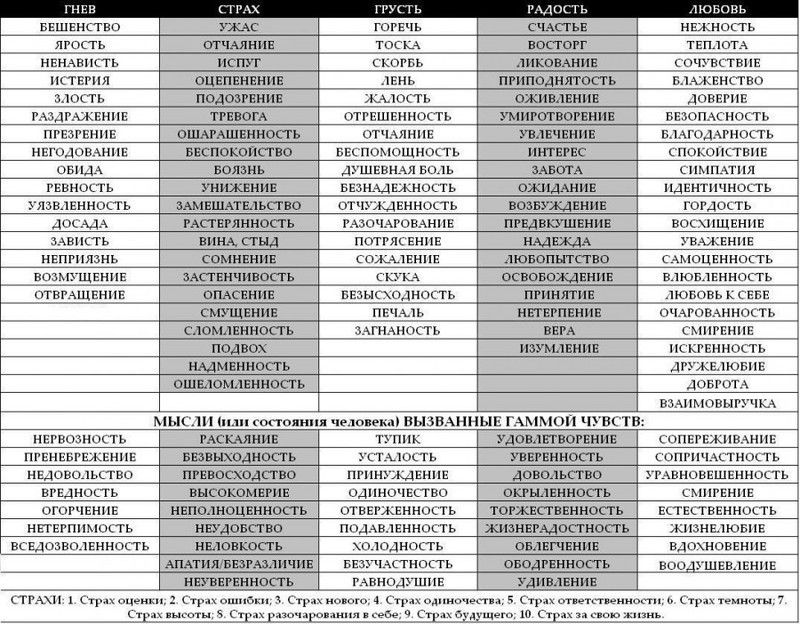 The development of three-dimensional vision is not yet fully understood. Children at the age of three or four often have a so-called false three-dimensionality in assessing the size of things. In five or seven years, the number of such errors drops significantly. When we ask children to throw or catch objects, we must imagine what difficulties the baby needs to overcome in order to learn how to manipulate an object moving in space. When a child, for example, wants to catch a flying ball, then, preventing possible consequences, he first prefers to defend himself by tilting his head slightly. He looks at the ball with only one eye, and this "one-eyed" information is not enough for him to coordinate his movements. Fully three-dimensional vision appears in a child at the age of about twelve, but this skill must be developed later.
The development of three-dimensional vision is not yet fully understood. Children at the age of three or four often have a so-called false three-dimensionality in assessing the size of things. In five or seven years, the number of such errors drops significantly. When we ask children to throw or catch objects, we must imagine what difficulties the baby needs to overcome in order to learn how to manipulate an object moving in space. When a child, for example, wants to catch a flying ball, then, preventing possible consequences, he first prefers to defend himself by tilting his head slightly. He looks at the ball with only one eye, and this "one-eyed" information is not enough for him to coordinate his movements. Fully three-dimensional vision appears in a child at the age of about twelve, but this skill must be developed later.
This chapter contains games that help develop meaningful vision. We offer a variety of activities that evoke curiosity and desire in children to learn what older children and adults already know how to do.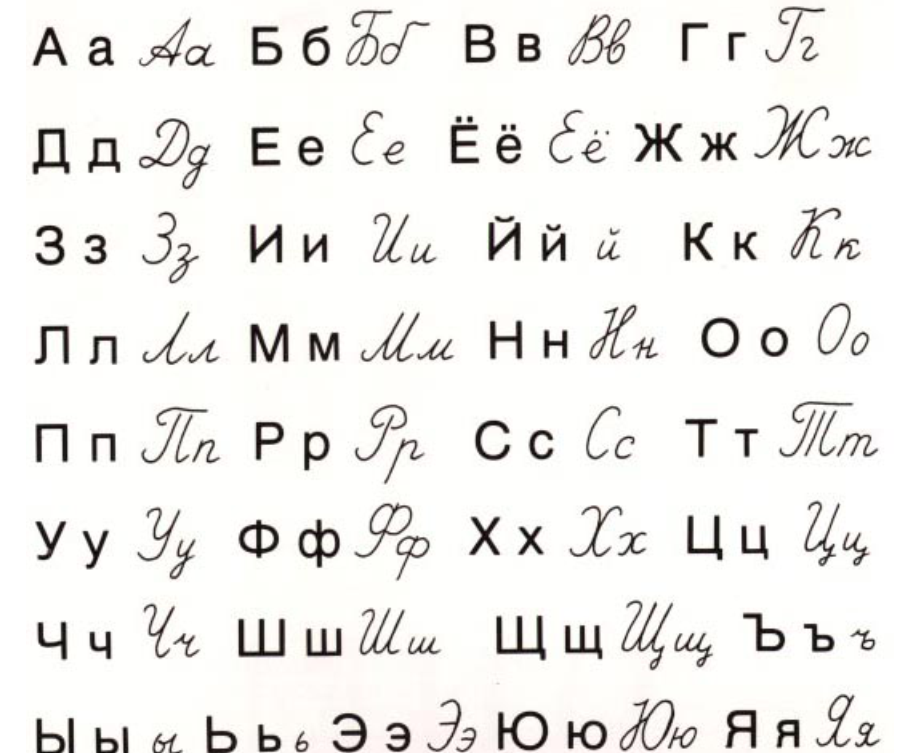 At the same time, rejoicing at the success of children, the leader should not forget about their right to make mistakes, it is important to remember that it is through trial and error that children learn new things. The art of the leader of the group is to choose appropriate games and activities, provide children with opportunities to learn, encourage the group, and rejoice when children overcome difficulties.
At the same time, rejoicing at the success of children, the leader should not forget about their right to make mistakes, it is important to remember that it is through trial and error that children learn new things. The art of the leader of the group is to choose appropriate games and activities, provide children with opportunities to learn, encourage the group, and rejoice when children overcome difficulties.
1. Hello, eyes!
Description:
This game is an excellent warm-up. Children have the opportunity to concentrate, focus and look into each other's eyes. In this way, children learn to connect with others.
The exercise will be even more enjoyable if calm, beautiful music is played during its execution.
Age of participants: from 4 years old
Instruction for children:
Sit in a circle on chairs (or on the floor).
I see many wonderful, large, attentive eyes. I see brown eyes... gray eyes. .. green eyes... blue eyes.
.. green eyes... blue eyes.
Let's try to play a game where you can talk with your eyes. Do you know how you can talk with your eyes? What do you say with them when, for example, you close your eyes? What do you say with your eyes when you open them wide? What do you say with them when you blink? And how do your eyes behave when you want to say to another child: “Hi, I want to play with you”?
Each of you can try to make eye contact with someone on the opposite side of the circle. When that person looks back at you, you both get up and switch places. As you pass by, you can greet each other: shake hands, smile, or do something funny, like rub your noses...
(The number of participants must be even so that everyone has the opportunity to exchange with another.)
2. Clothespin
Description:
The task of the participants is to hit the target by throwing clothespins into containers with different - small or large - holes. It is important that each child can choose which vessel to aim at. Thus, he can assess his capabilities and choose a feasible task for himself. In addition, in this exercise, children train in the ability to fix a target and follow a moving object with their eyes. The fact that they can rise from their place makes the task especially attractive to them.
Thus, he can assess his capabilities and choose a feasible task for himself. In addition, in this exercise, children train in the ability to fix a target and follow a moving object with their eyes. The fact that they can rise from their place makes the task especially attractive to them.
Materials: you will need clothespins and containers with holes of different widths - for example, a tin can, a shoe box, a waste paper basket, a cylindrical vase, etc.
Age of participants: from 4 years old.
Instruction for children:
I want to see how well you can aim.
One of you sits on this chair and receives three (or more) clothespins. He should try to throw these clothespins into one of the containers. At the same time, he decides where he will throw clothespins - in a box, jar or vase. Count the number of hits. Each clothespin that falls into the container counts as a hit.
(At the beginning of the exercise, you can place one of the containers in front of the child.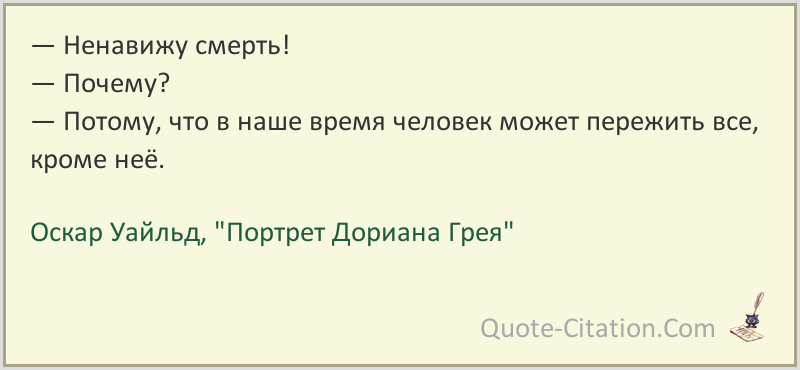 Ask the child if the container is conveniently located. containers in space.)
Ask the child if the container is conveniently located. containers in space.)
3. Pencil
Description:
With the help of simple objects, children can learn to concentrate their eyes and navigate in space.
Materials: for each child two new, round, unsharpened pencils.
Age of participants: from 4 years old.
Instruction for children. (To get the children's attention, start with balance exercises.) Can you hold a pencil that is across your index finger? Can you hold it on the other finger?.. And on the other hand? Can you keep it on your forehead? Or on the nose? Where can you even keep it?
Now please put the pencil on the floor. Roll the pencil across the floor with one finger. Now roll with the other finger. Can you roll a pencil with your fingertips?
Lie down on the floor and try to roll the pencil with your breath. To do this, take a book and put it on the floor next to the pencil.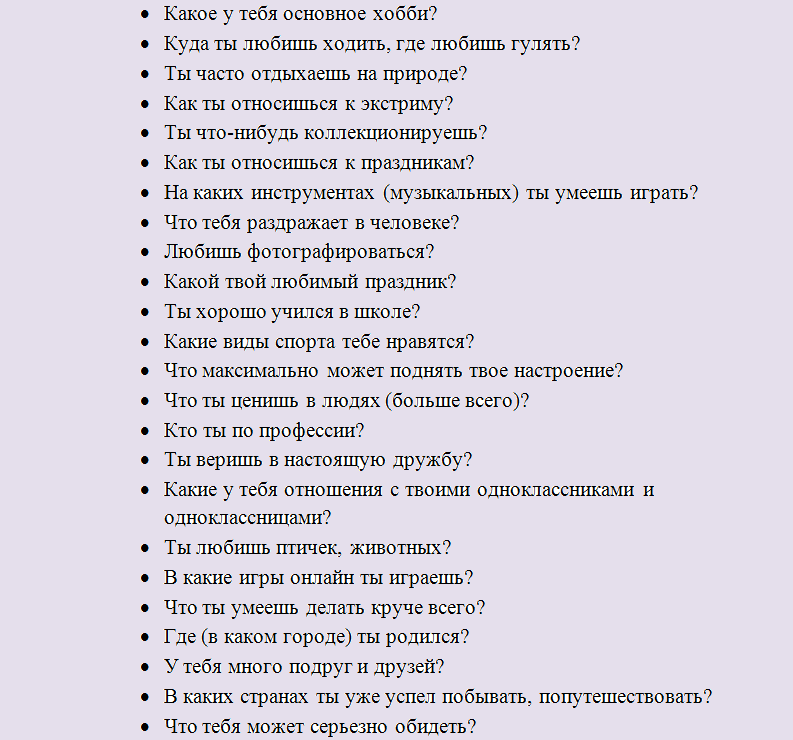 Blow on the pencil so that it hits the target - it touches the book. Try to increase the distance from the pencil to the book ... Let's increase the distance a little more. (This task is inspiring for the children, but no more than three attempts should be made - the exercise should not lead to hyperventilation.)
Blow on the pencil so that it hits the target - it touches the book. Try to increase the distance from the pencil to the book ... Let's increase the distance a little more. (This task is inspiring for the children, but no more than three attempts should be made - the exercise should not lead to hyperventilation.)
Now place the pencil with one end facing forward. Show me how you move the pencil with your thumbs forward, then back, one way, the other ... In this case, the end of the pencil should always point in the same direction - look forward.
Can you move the pencil with other parts of your body? Can you make sure that he points in the same direction all the time?
Now place two pencils side by side on the floor, a short distance apart. Pencils should lie parallel to each other and look forward. ( Show their location with an example. ) Do you know what the word "parallel" means? Can you move the pencils forward with just your thumbs and still make sure they stay parallel to each other? Can you move them back? Can you move them any other way to keep them parallel?
Now again put them parallel to each other, but at such a distance that you can jump between them .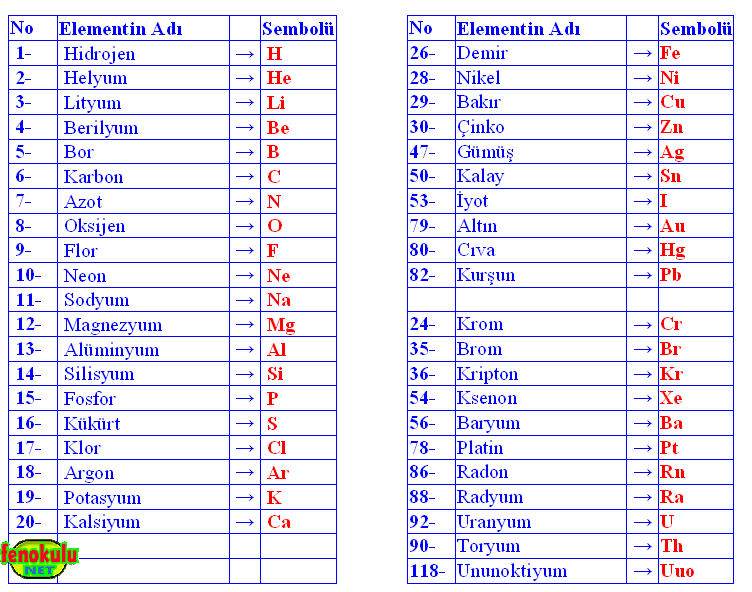 ..
..
Jump into the space between the pencils ...
Jump out of there...
Now, before you jump between the pencils again, make the distance between them more...
Jump between the pencils... and again... You can jump on both feet at the same time or on one foot, as you like.
Make the distance even bigger...
Good!
4. Stations
Description. We use simple stories in this game to keep the kids interested. When children are interested, they can perform several related tasks at the same time. First of all, they must learn to build a route and follow it. It requires attention and composure. Moreover, children can move in a variety of ways, as well as practice balance and coordination of their movements.
Materials: you will need one roll of duct tape to mark the rails and chairs to mark the stations. At the beginning of the game, attach duct tape to the floor, marking an interesting, twisty path, so that it forms one continuous line.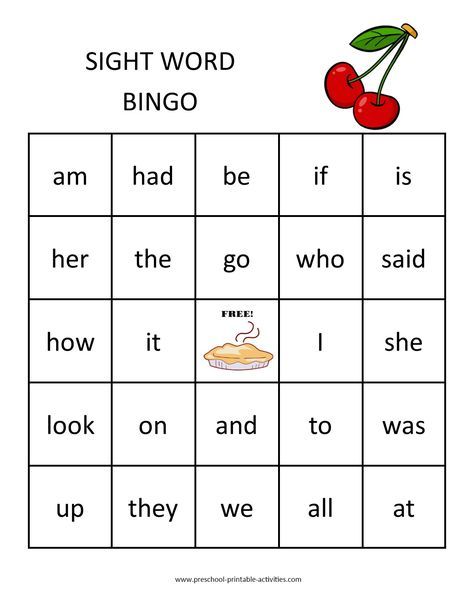 Some sections of the path can be straight, some - winding. You can make the path more interesting and fun by building a tunnel (table) on it and making detours around corners or large furniture. Each station is indicated by a chair, which is located above the tracks. There should be enough stations so that a group of two or three children can start from each of them.
Some sections of the path can be straight, some - winding. You can make the path more interesting and fun by building a tunnel (table) on it and making detours around corners or large furniture. Each station is indicated by a chair, which is located above the tracks. There should be enough stations so that a group of two or three children can start from each of them.
Age of participants: from 3 years old.
Instruction for children:
When was the last time you traveled by rail? See what's built here. The duct tape on the floor shows where the rails that the trains run on are located. Chairs are stations where trains make stops. And you will be trains with passengers going from one place to another.
I want you two to leave the station, so stand in such a way that there are two people at each station. Now we need to find out in which direction the trains will go. You can show me which direction is comfortable for you to move. Good!
You must be the jumping train first.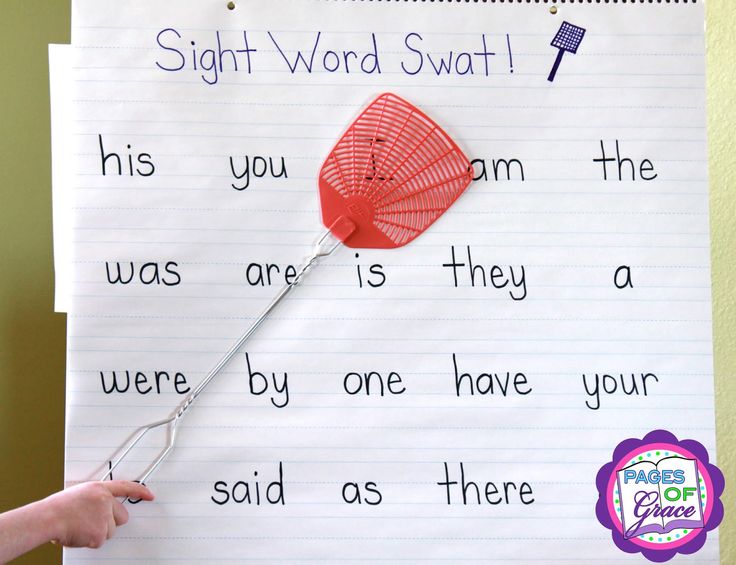 Stand with your legs spread over the line and jump to the nearest station where we will get off the train to buy something to eat...
Stand with your legs spread over the line and jump to the nearest station where we will get off the train to buy something to eat...
(When all the children arrive at the nearest station, ask them what they bought.)
Now trains will move on. All landing! Show me with your finger where the nearest train station is. Now the train should only jump on one leg. Can you keep your balance and jump on one leg? When you reach the nearest train station, we will take a break and you can buy yourself something to drink…
(When all the children have arrived at the nearest train station, ask them what they bought to drink.)
Everyone boarding! Show me with your finger where the nearest station is. Now the train should reach her like a crocodile, moving across the floor on its hands and feet. The paths are between your arms and legs, so you must move slowly to the nearest train station. We'll take a break at the next station to buy something for you to play with.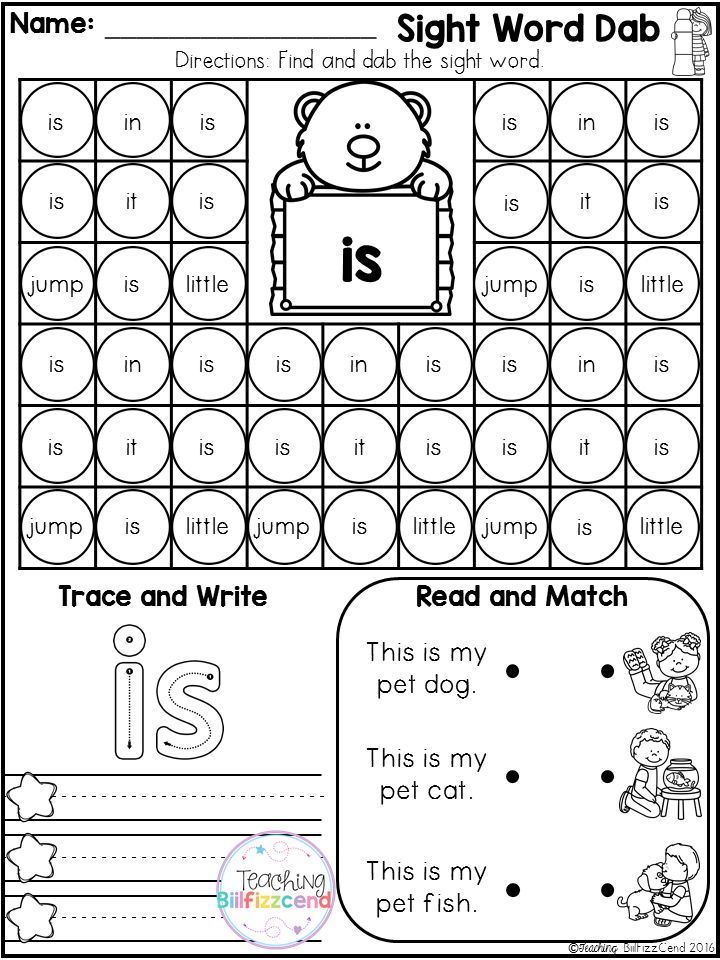
(Let the children tell what they bought this time. Let them play a little imaginary game with the item they bought. Help organize the game if necessary. Then proceed to the final step.)
And now we will remove all the stations, and we will have one endless railway. Stand so that the line is between your legs. Place your hands on the shoulders of the child in front of you. The first child is a locomotive, the rest are wagons. Let your arms be extended so that you can see the floor. Now show me how the train starts slowly and goes all the way.
5. Matches without heads
Description:
We can train children's visual memory and teach them to hold small objects. Children must coordinate eye and hand movements and carefully control body movements.
It's better if the guys are barefoot.
Materials: You will need three headless matches for each child, which should be prepared before the game starts.
Age of participants: from 4 years old.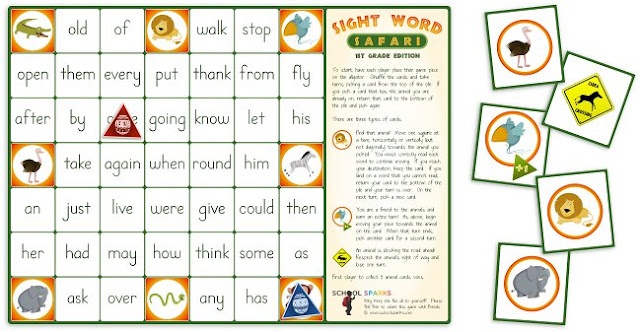
Instruction for children:
I want to see if you can play with very small objects. I will give each of you a match. Sit here.
Now you can try how the match sticks to your finger. Show me what you are doing... Ok...
You will now receive the second match. Place both matches on two different fingers of the same hand. Can you hold them?...
I'll give you a third match as well. Can you hold all three matches on three different fingers of the same hand?... Well done!
Now let's try with the other hand. First one match ... then two ... then three ... Now move your hand. How many moves can you make without the matches falling off your fingers?
Can you hold all three matches on your arm, on the top of your hand, on your shoulder, on your forearm?
Try with the other hand. Move her. How many moves can you make without the matches falling?
Now I want to see if you can hold matches on your leg. Can you hold matches on your foot, on your knee, or on your thigh? Move your foot.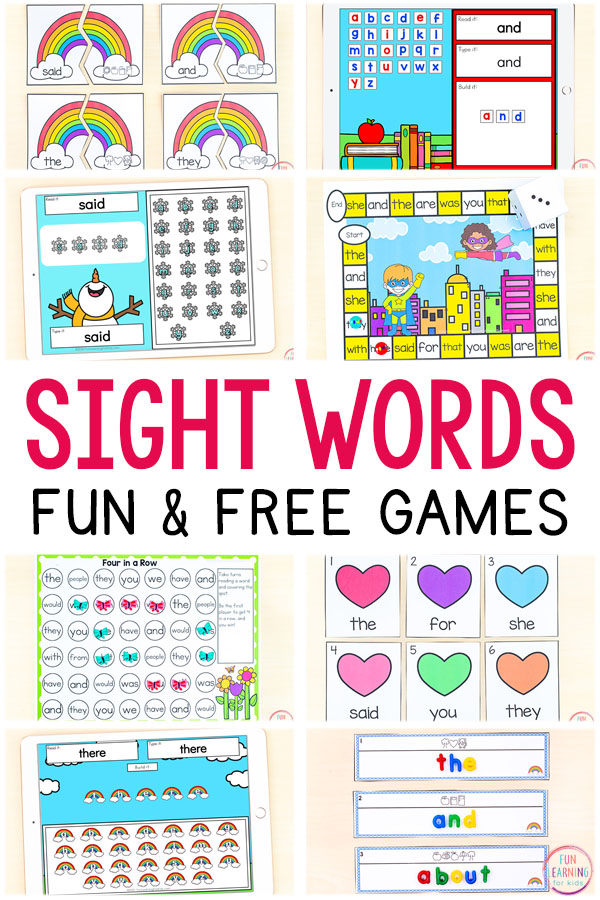 How many moves can you make without the matches falling?
How many moves can you make without the matches falling?
Now try with the other leg. Hold all three matches and show me how you move your foot while doing so...
Can you hold three matches between your toes when you walk slowly? Walk very carefully and hold the matches with your toes...
Now try to walk and hold the matches with your other foot...
Now show how you can hold three matches on yourself if you move slowly. Choose three places where you want to put the matches and show me how you move so that the matches don't fall...
Put the matches on three other parts of your body. Try to use both sides of the body. Walk slowly so the matches don't fall... All right.
6. Who is missing?
Description:
This exercise trains children's visual memory. To complete it, the group members must have known each other for more than two months. During this time, a certain sense of unity develops, and they react with interest to the question “Who is not?”.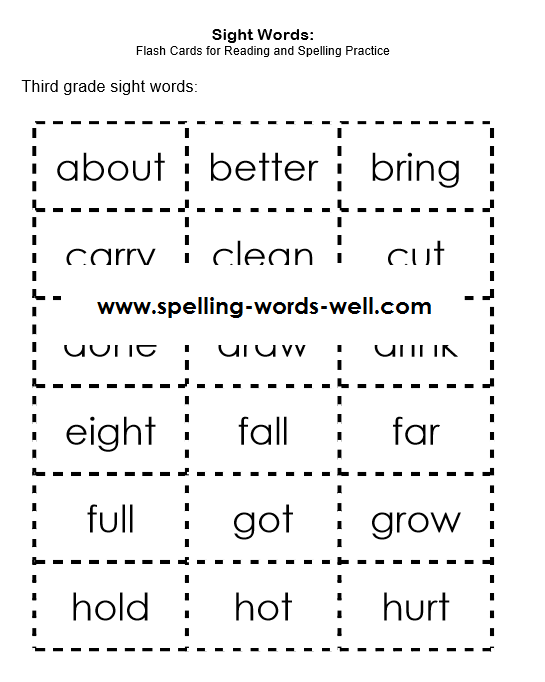
Age of participants: from 5 years old.
Instructions for children:
Sit together in a circle on the floor. I want to offer you a game called "Who is not?".
One child goes out the door for about a minute and waits. Another child is hiding in the room at this time. Then the first child comes back and looks around the whole group to see who is missing. When he determines who is not, he must name him. If he cannot remember the name, he can describe the child.
If the guessing child does not understand who is hiding, then the hidden child can help him by saying, for example, the following:
“This is how my voice sounds.
I wear glasses.
I am Yana's friend.
Then another child hides behind the door...
7. Strong wind
Description:
In this game, children train their sense of space and regulate the strength and rhythm of breathing.
It is important that the game is not played too long, as this can lead to hyperventilation.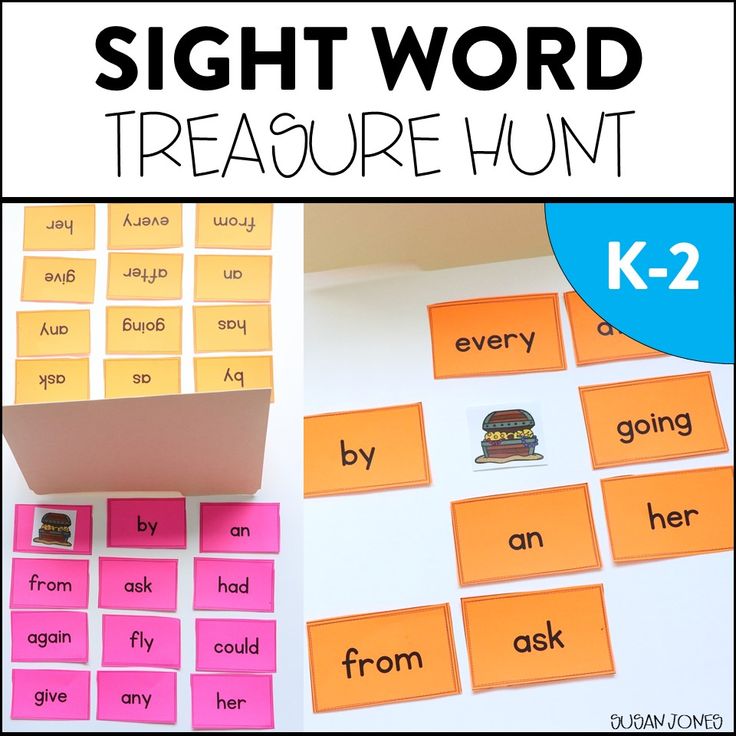 In order for the children to play meaningfully, give them the necessary instructions during the pauses.
In order for the children to play meaningfully, give them the necessary instructions during the pauses.
Materials: you will need three matchsticks without heads and a target (a book or a large wooden object).
Age of participants: from 5 years old.
Instruction for children:
Please lie down on your stomach on the floor.
I will give everyone three matches without heads and a target (a book or a piece of wood). Place the book in front of you at arm's length. Then put the match, about 30 cm from the book, closer to you. (Help the children measure this distance. The older the children, the greater it can be.)
I will count to five. You must blow on the match five times so that when I say "Five" it reaches the book. Can you blow so that it reaches it no earlier and no later? ... At the start, attention, march: one ... two ... three ... four ... five ... Good. Now let's try again: one... two... three... four... five.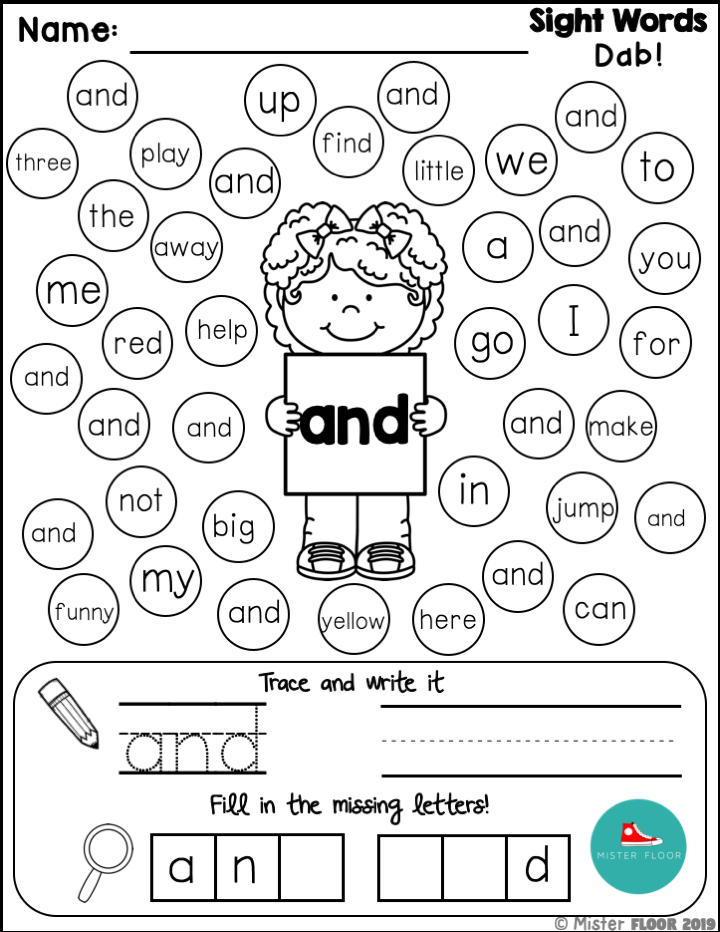 ..
..
Now let the first match lie on the book. Take the second match and place it on the floor. This time I'll count to three. Can you blow on the second match so that it hits the target in three steps: one ... two ... three ... OK ... Put the second match on the book.
Now take the third match and put it on the floor. Try to blow so that the match hits the target with one breath. Reade set Go! Well you are doing well!
8. Movable toy
Description:
Children must pay attention to the movements of others and coordinate their own movements with them. At the same time, this is a good opportunity for children to show their imagination. The kids love this game very much.
The game is more suitable for small groups, larger groups require the assistance of two or more adults.
Materials: each child will need a toy on wheels that can be carried around on a string, such as a toy car.
Age of participants: from 3 years old.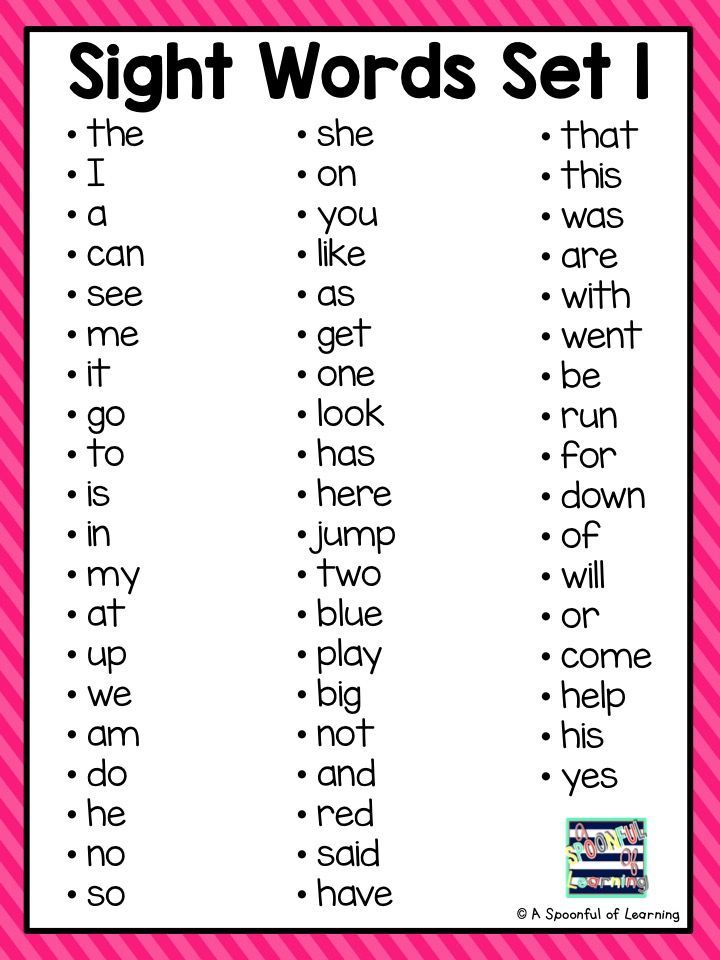
Instruction for children:
I want one of you to give me an movable toy.
Now I will walk around the room and the toy will follow me. (Walk around the room and at the same time show the children how you are watching the toy: you can return to the same place, then walk in an arc, etc.)
Look at how I move wonderfully, while the toy does not tip over and moves as fast as me ...
Now show me how you move around the room with your toys. Make sure that they do not lag behind you and do not run forward. From time to time look at other children and their toys so that you don't bump into anyone...
Now please sit on the floor and put the toy next to you. Look at me, how I will play with each of you.
Maria, sit here as if you were a moving toy. It's like I'm tying you to a rope and slowly pulling you along. You can move the way you want; you can walk, crawl, jump, move on all fours... Look at me carefully to know in which direction I'm moving.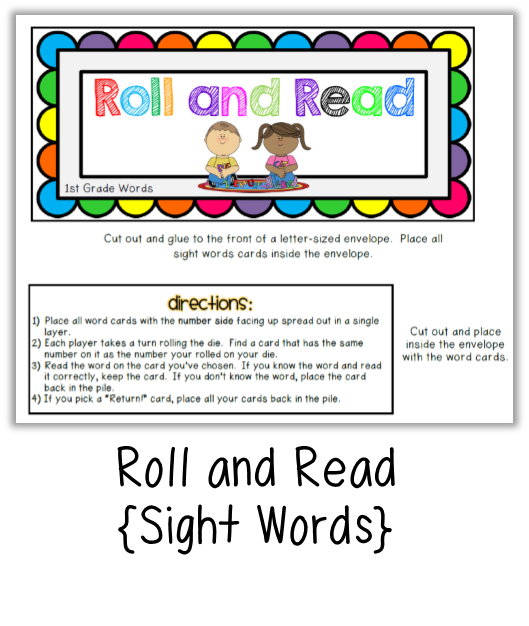
(Follow the movements of the children to match your pace with the way the child is moving. The synchrony of your movements gives the charm of this game. Walk around the room with each child for about a minute, while looking at him kindly and joyfully.)
Now your turn. I will be a mobile toy, and each of you will be able to "carry me around the room on a string."
(You can make changes to the game, for example, you can be driven by two or three children at the same time. After all, you are a difficult toy.)
9. Geography of the room
Description:
This interesting game gives children the opportunity to train their visual memory. The guys point to the objects they mention with their hands. While playing, they can stay in their places.
Condition of the game: the children have already spent some time in this room.
Age of participants: from 5 years old.
Instructions for children:
I want to take you on a fantastic flight with me.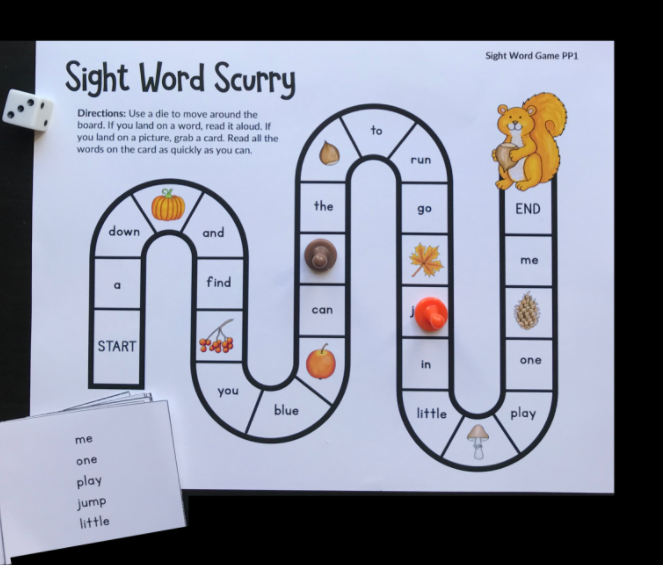 To do this, close your eyes and imagine that we are moving quietly around the room and stop to look at the object that I name. Can you imagine with your eyes closed the place where I am sitting right now? I think you can.
To do this, close your eyes and imagine that we are moving quietly around the room and stop to look at the object that I name. Can you imagine with your eyes closed the place where I am sitting right now? I think you can.
Let's get started. Close your eyes and take a couple of deep breaths. When we take a deep breath, we collect and concentrate. I want to hear how you breathe. Good.
Now remember where the door to our practice room is. Can you raise your hand and point to the door without opening your eyes... Wonderful!
Remember where the window is and show it to me with your hand….
Remember where the game shelf is and show me where it is with your eyes closed...
(In the same way, ask to see three or four other items that are meaningful to the children.)
Where is your favorite place in the room? Imagine it exactly. Point to your favorite spot. Good.
Now you can open your eyes and take a couple of colored pencils and paper to draw the things you saw in your favorite place.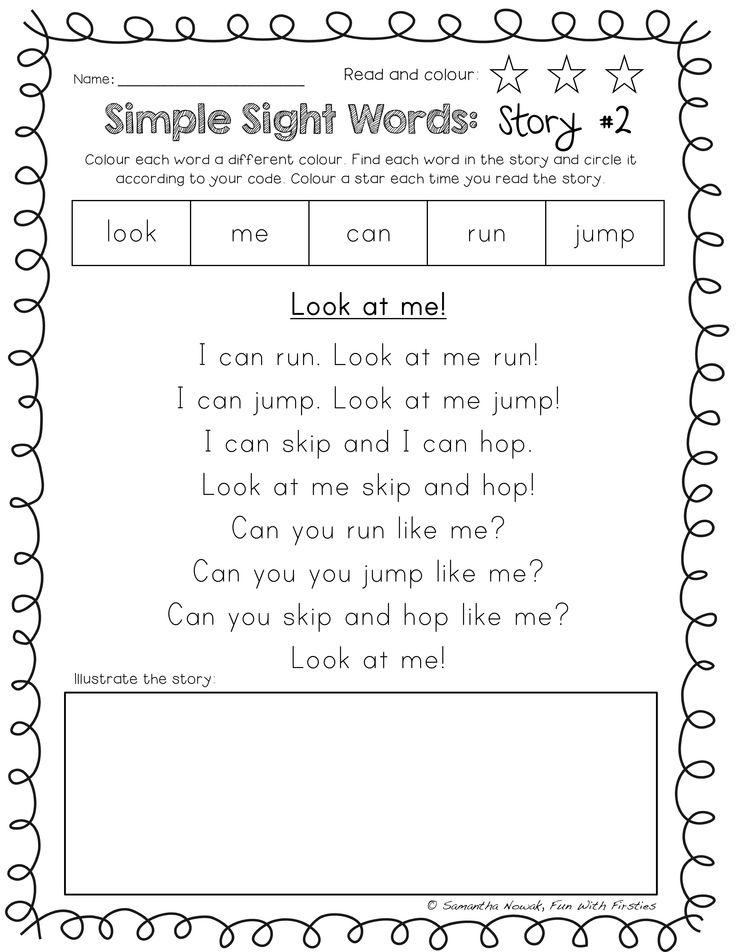
10. Dragon Hunt
Description:
This is a live game in which children have to follow the target with their eyes. They get the opportunity to practice hand-eye coordination. Group dynamics help reduce aggression and irritation.
Children are likely to make sudden movements, ask them to try to be careful not to bump into each other. If the room is not very large, it is better to play outside.
Materials: two very light large balls or two pillows measuring approximately 30 x 30 cm.
Instructions for children:
Hold hands and stand in a circle. Now you release your hands. I want to offer you a game called "Dragon Hunt". Listen carefully as I explain her rules.
Two children imitate a dragon. One of them is the head of a dragon. He's getting right here. The other is the dragon's tail. He stands behind the first, holding him by the hips and forming a ring with his hands.
The dragon stands in the middle of the circle.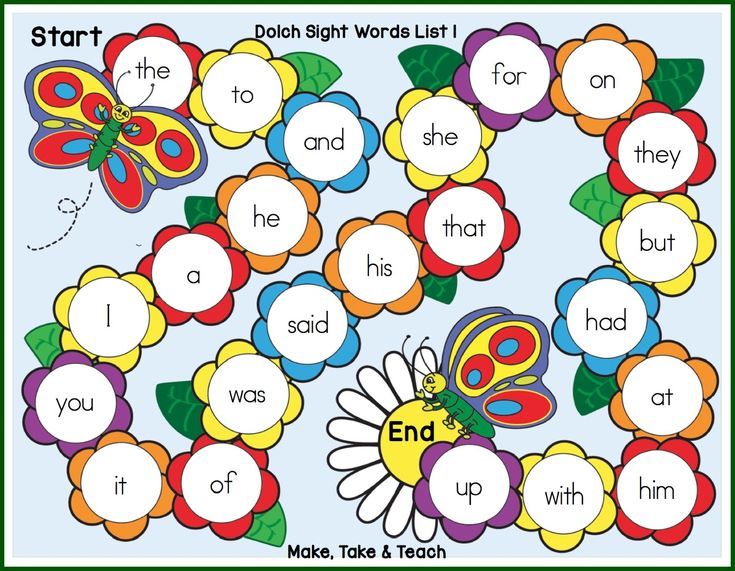
We have two balls. Children in a circle throw balls and try to hit the dragon - to get into the formed ring. When the ball "runs away" from the circle, it must be returned, and then again thrown into the ring. But remember that you should not hold the ball in your hands for more than three seconds.
When the dragon is defeated, it is made again: the dragon's head returns to the general circle, the tail becomes a new head, and the one who struck the dragon becomes a tail.
(Option: you can add a second dragon to the game, but in this case you need to significantly increase the circle.)
11. Remember and show
Description:
with closed eyes to find their place in space. Later, they must learn to recall these images in memory.
Age of participants: from 5 years old.
Instructions for children:
Each of you, without hesitation, notices where this or that important thing is located. You know where to find your jacket; know where your favorite toy is, where your favorite cookie is kept.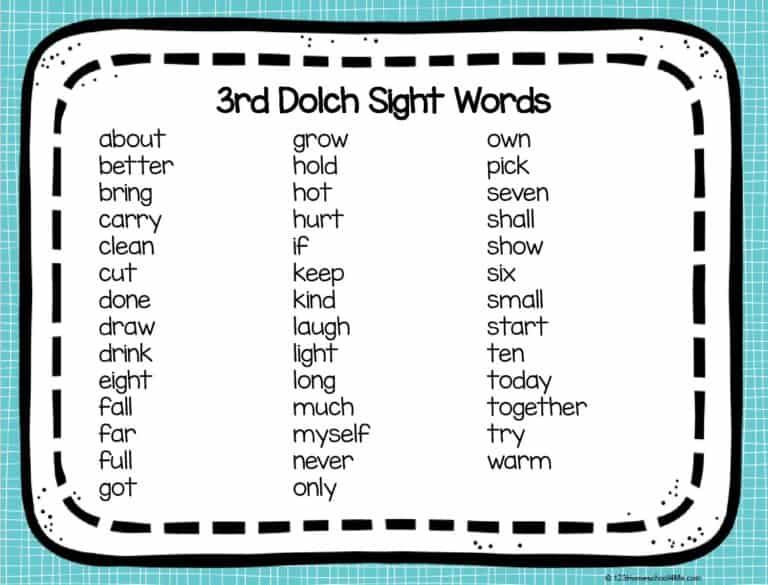
I want to see how you remember where things are.
Walk around the room. Touch the things you meet along the way. Feel the doorknob, please... the wastebasket... the radiator... the floor... the toy shelf... (Name any objects in the study room.)
Now stop and close your eyes. With your eyes closed, point your finger at the thing you just touched. Point to the toy shelf... the floor... the radiator... Show me where the wastebasket is... where the doorknob is... All right.
Stay where you are and open your eyes for a second... Now close your eyes again. Now you have to show me where the items are in another way. Do not show them with your hand, but turn in their direction with your whole body.
Turn towards the toy shelf... radiator... paper basket... towards the floor...
(Try to have the children turn in different directions.)
Now open your eyes, I want to see if you can move to those places which I call you. Sit on chairs... Now stand behind a chair.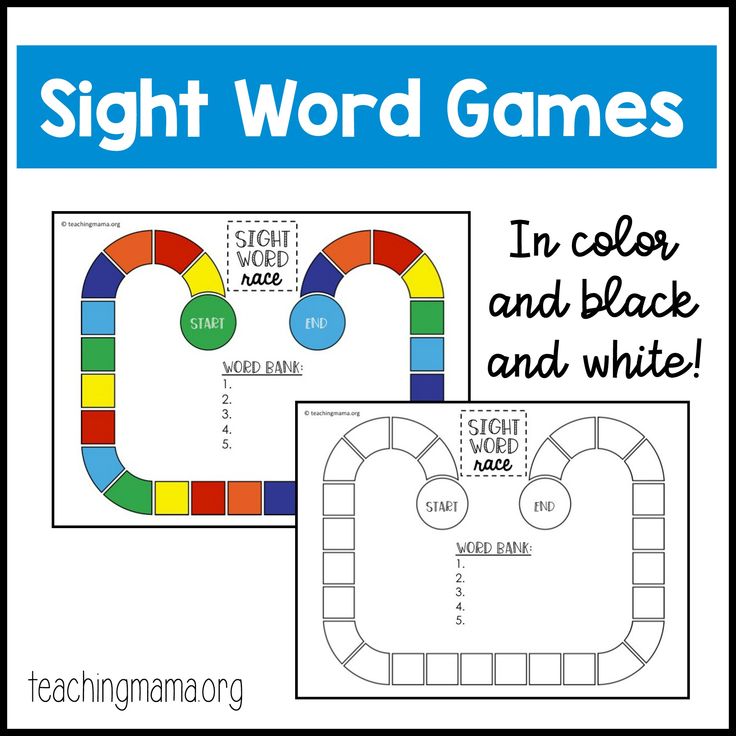 .. Now put your foot on a chair... Lie down on a chair... Stand between two chairs... Stand against a wall... Stand on the opposite side of the room... Lie down on the floor... Stand next to another child... Stand behind another child... Lie down next to another child ... How should you stand so that each of you stands behind the other?
.. Now put your foot on a chair... Lie down on a chair... Stand between two chairs... Stand against a wall... Stand on the opposite side of the room... Lie down on the floor... Stand next to another child... Stand behind another child... Lie down next to another child ... How should you stand so that each of you stands behind the other?
(Variations are possible in the last task: for example, children do not move to different places themselves, but rearrange some object - a book, a box, etc.)
In this activity children can practice their spatial intelligence. Children feel more confident when they know that the room has all the things they need.
To introduce an additional element of tension into the game, you can pause for a moment before naming the object at the end of the sentence. This effect can be enhanced if you pronounce the sentence at a normal pace and only a word after a pause - quickly and expressively. To maintain tension, come up with more and more interesting movements.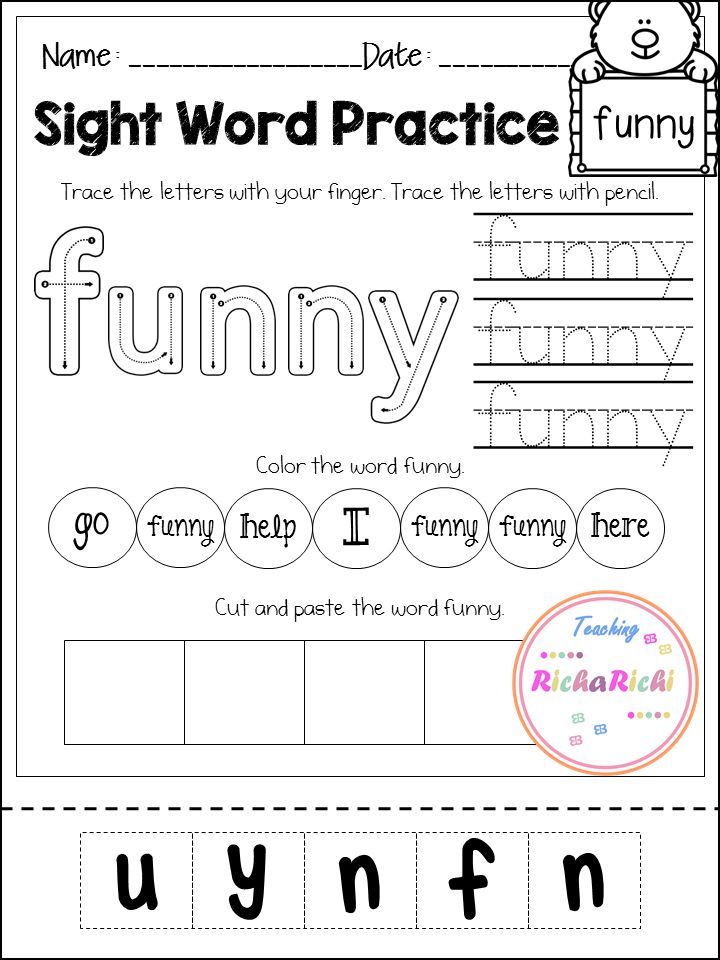
Age of participants: from 3 years old.
Instructions for children:
I want to know if your eyes can find the thing that I will name in the room. When I say, for example: "Please show me where the door is," I want you to turn your whole body in the direction of the door. Do you understand what needs to be done? (Give the children time to think so they feel they can do this difficult task.)
Please show me where the box of blocks is...
Please show me where the colored pencils are kept...
(Further on, name the children typical objects for this room and meaningful for the children.)
Now we will do it a little differently. When I ask you, for example, "Where is the paper basket in our room?", you must run to it very quickly.
Where are the children's books in the room?
Where are the balls in our room?
(List other objects familiar to the children.)
Now take a toy each and place them on the floor as far apart as possible.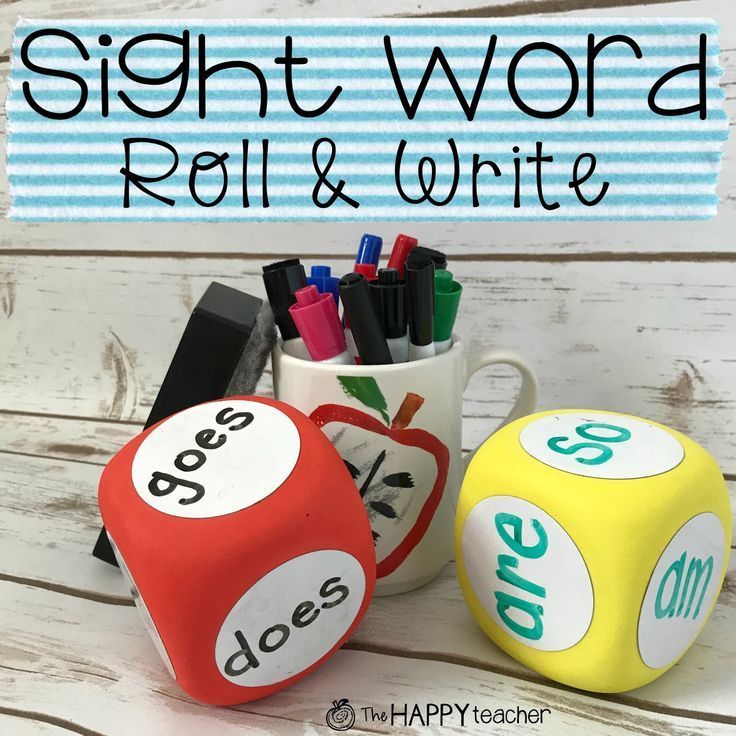 (Help the children with this.)
(Help the children with this.)
Now you have to tell me where the toy is in a special way. When I ask, “Where is the red car?”, you must run to it and together create a vicious circle around it. Then I'll know that you all found the red car.
Where is Mark's bear?
Where is the rocking horse?
(Name some other toys the children put on the floor.)
13. Paper and pencil
Description:
In this game, children must use both hemispheres of the brain to solve the problem. Mainly here, eye-leg coordination is practiced and the small muscles of the lower leg and ankles are trained. When the children have a feeling of success, the game gives them great pleasure.
Materials: for each child a square sheet of paper 50x50 cm and two short, not very sharp pencils, approximately 8-10 cm each.
Age of participants: from 4 years old.
Instructions for children:
Remove shoes and socks.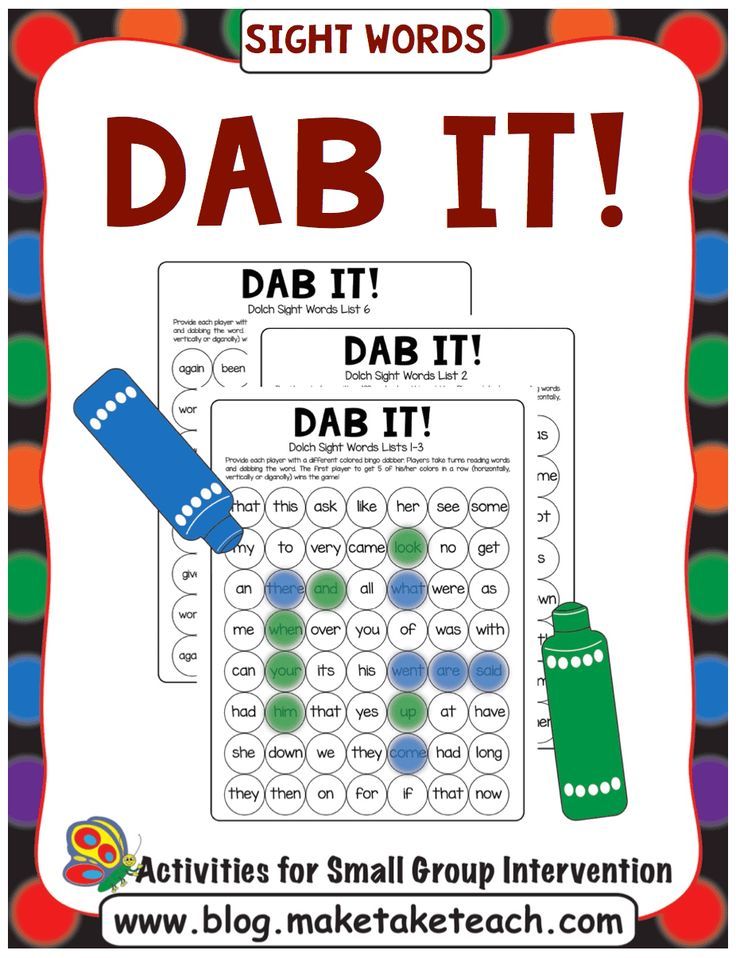 I want to see how dexterous your legs are. Please take two short pencils and place them between your toes. Make sure your fingers are pointing down. Now try walking around the room on your heels. Raise your toes so high that the pencils don't leave marks on the floor...
I want to see how dexterous your legs are. Please take two short pencils and place them between your toes. Make sure your fingers are pointing down. Now try walking around the room on your heels. Raise your toes so high that the pencils don't leave marks on the floor...
You're doing well.
Now let's try something else... Take a piece of paper and put it on the floor. Hold a pencil between your toes. It doesn't matter which fingers you place it between. Try to draw something on a sheet.
Now try to do the same with the other foot... Let's look at these "leg drawings".
You can read more about this issue in Klaus Vopel's book “Hello, little eyes! Outdoor games for children 3-6 years old.
Tags : game for children children's games mobile 3 years old 6 years old preschooler
#
Tags : #
"Zombies and spoil eyesight": how to choose a useful mobile game for a child
Health
Children's mobile games - is it progress or degradation? Parovoz Animation Studio Community Manager Ekaterina Sviridova explains how not to make mistakes when choosing an app and how technology can help you better understand your child.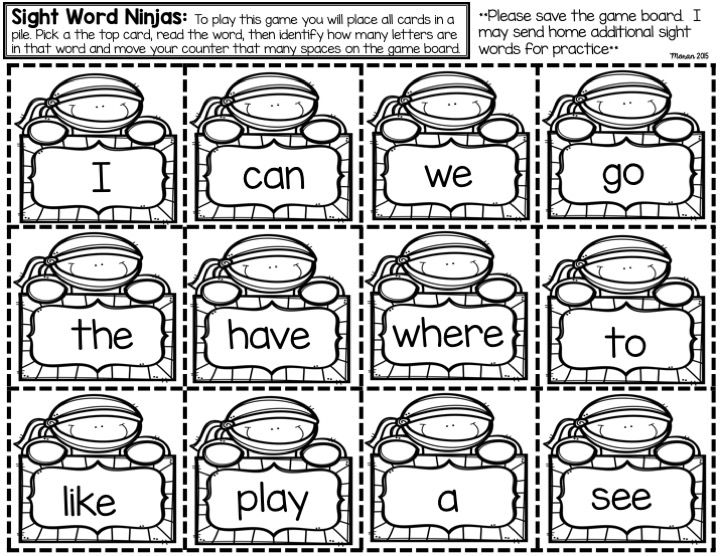
Parents' reaction to mobile games
For starters, let's delve a little into history and remember when interactive games became known in Russia: in 1984, Nu pogodi, where the wolf catches eggs, and Tetris appeared, and in 1996, the game "Tamagotchi" was released. Surely many people remember these games and even played them, but what did your parents say about this? Most likely, the reaction was ambiguous. After all, when a child plays, he can behave emotionally, sometimes even too much: “The wolf does not catch eggs! Eggs fly too fast. Oh my God! Mom, I can't do anything”
There was an opinion that playing Tamagotchi was completely harmful: the toy squeaks at night, the child becomes nervous. Many parents forbade their children from such entertainment and instead of spoiling their eyesight and posture, they offered to go for a bike ride or spend time with friends.
Time has passed: technological advances and advances in the mobile industry have brought us into 2019 with many bright and educational games from different studios.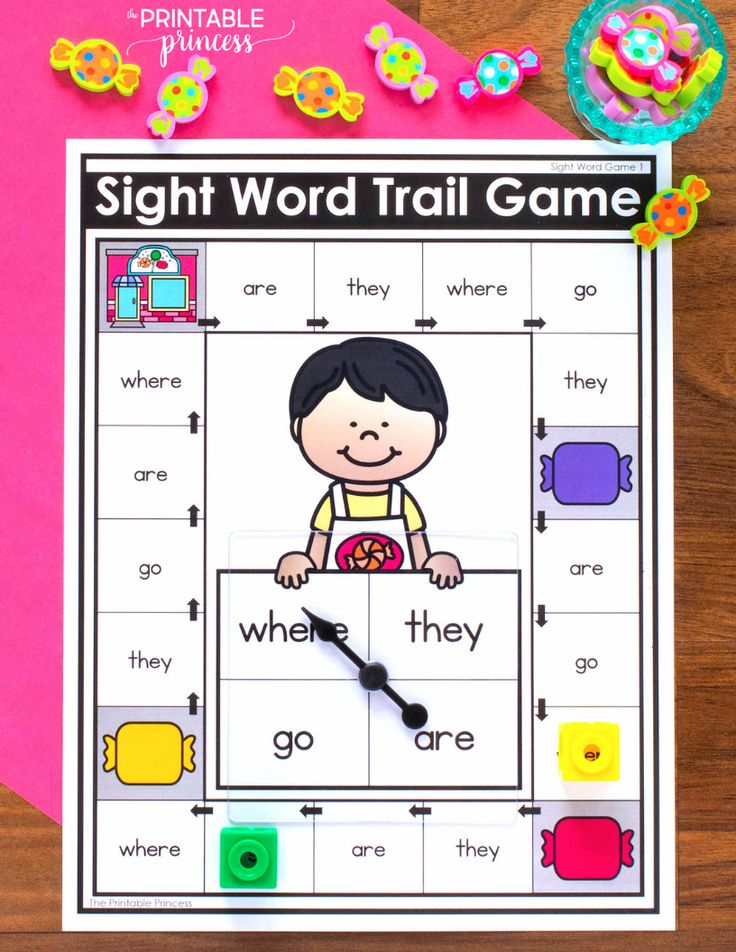 "Be-be-bears", "Leo and Tig", "Talking Tom", which, probably, absolutely all parents know about, since the game has been on the Google play and App Store charts since about 2012.
"Be-be-bears", "Leo and Tig", "Talking Tom", which, probably, absolutely all parents know about, since the game has been on the Google play and App Store charts since about 2012.
At the same time, comparing the reaction of parents from the 1980s and the reaction of parents from 2019, we can conclude that in fact nothing has changed. They still worry about whether these games are harmful, whether they spoil the child's eyesight, whether they worsen his socialization.
Psychologist explains how to talk to children and understand what they really think
How to play correctly
In 2019, the games of the domestic studio "Interactive Mult" were installed more than 30 million times. And this data is only for one studio, but there are many others. Such figures indicate that now almost every child has a phone and a tablet, which means that a large number of children play. But why is the question of games so worried about parents?
There are fears that games zombify, interfere with the development of speech, make the child violent and asocial, hinder the development of social ties, the child, who is constantly with his phone, has neither friends nor acquaintances.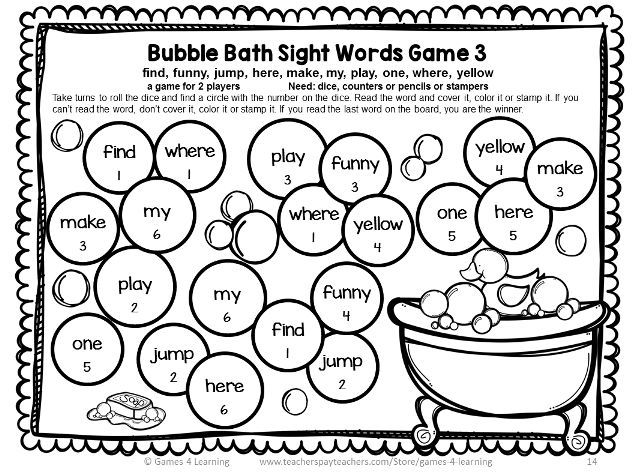 There is an opinion that games form an emotional connection with a non-existent character, and finally spoil the eyesight. Let's figure out what's wrong with these facts.
There is an opinion that games form an emotional connection with a non-existent character, and finally spoil the eyesight. Let's figure out what's wrong with these facts.
Let's start with the fact that games do not zombify - I'm sure that they, on the contrary, make the child more focused. After all, with the help of special tasks you can develop mindfulness, you just need to choose the right game. Educational applications can teach a child to talk, love nature, communicate better with parents, and this is also a very important point. Games are best chosen together with the baby and teach him. In this case, the game will serve as a specific link between the child and the parent.
You choose a game together, play together. Quiet relaxing family evening.
In the same way, play can serve as a link between the child and his environment. It doesn't have to be some kind of online game he'll play with his buddies he's never seen. You can also meet with your real friends and play together at home.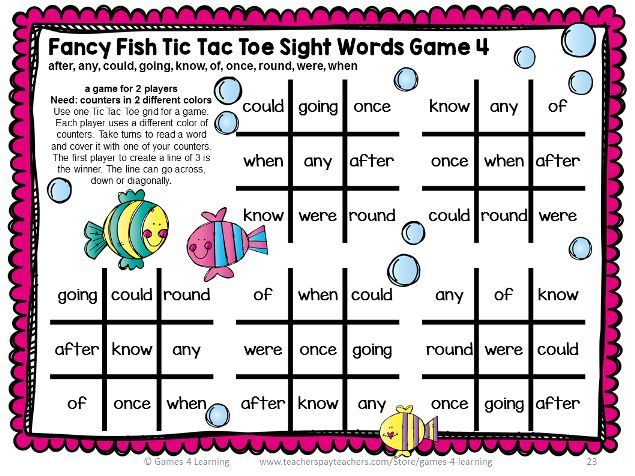 Games help to better understand the world around us and teach care. We can cite applications built on the mechanics of the Tamagotchi as an example: the child must raise his pet, feed him, stroke and bathe him. It's great that there are such games, because they really only make the child kinder.
Games help to better understand the world around us and teach care. We can cite applications built on the mechanics of the Tamagotchi as an example: the child must raise his pet, feed him, stroke and bathe him. It's great that there are such games, because they really only make the child kinder.
But everything is good in moderation. Even the most educational and child-friendly application can be harmful, spoil posture and vision if the child spends too much time playing.
What are children's mobile games
Conventionally, children's mobile games can be divided into the following genres:
- Entertaining games - designed to have a good time. For example, when flying with the help of a game, you can help your child not get bored.
- Educational games - teach the child something new: history, biology, geography.
- Puzzles - train thinking and memory.
- Educational games - help to get acquainted with the world, that is, they help even the smallest players to correlate phenomena, including objects or colors.

Paid and free games
Google Play or the App Store has a large selection of both free and paid games. The hand immediately reaches out to download a free game: “Well, why are they paid?” But what's the best way to be? The main advantage of paid games is the lack of advertising and high quality content. If you install a paid app, it will most likely have good voice acting, high-quality graphics, and verified text. Most likely, psychologists worked on this game together with the developer, which indicates its safety. The main disadvantage of paid games is that they are paid.
Free apps have the advantage of being freely available, but all games are monetized in one way or another, developers get paid for their work anyway. And it is likely that it will be monetized with the help of advertising, which in the end will begin to unnerve both the child and the parents. And you never know what kind of advertising it will be - there is a risk of getting into some rubbish.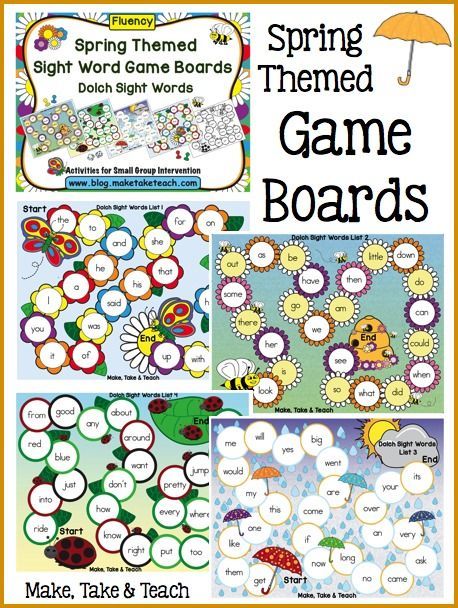 Therefore, I recommend downloading paid apps to avoid worrying about your child.
Therefore, I recommend downloading paid apps to avoid worrying about your child.
How to choose a game for a child
There are not so many main points. It is worth considering the age rating. It can be 0+, 4+, 9+, 16+, 18+. If your child is three years old, you can pick up a game of category 0+ and up to 6+ - most likely, it will not contain any prohibited scenes. For young children, install games with voice acting - it will be easier to play than to read something on the screen yourself.
Before installing the application, I recommend that you familiarize yourself with the developer's website or its showcase of games. If you see a sufficient number of released games, if they are talked about and written in a positive way, you can safely download the application and let your child play it. It's good to read reviews about the game in order to understand its structure, advantages, and what problems you can encounter there. And, of course, consider the interests of the child.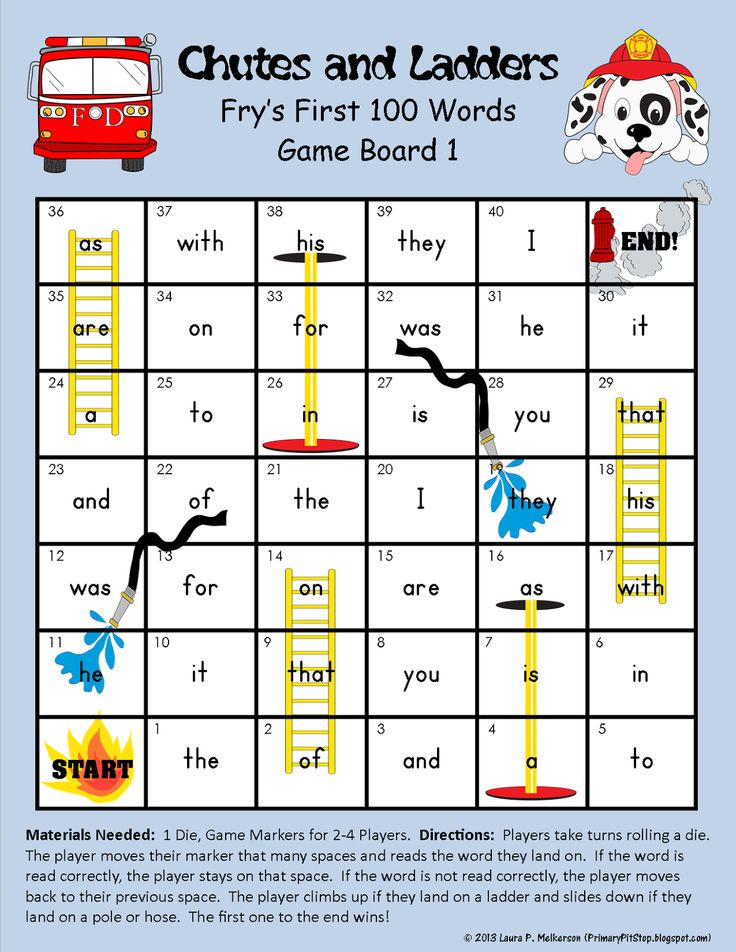 If he likes "Fixies" to the point of madness, there is no need to download an application with other characters out of principle. The games industry is so diverse that it allows you to choose a mobile game strictly for any preferences and wishes of the child.
If he likes "Fixies" to the point of madness, there is no need to download an application with other characters out of principle. The games industry is so diverse that it allows you to choose a mobile game strictly for any preferences and wishes of the child.
What gadgets will bring to a child's life
First of all, this is the development of new technologies. The year is 2020, so it will be useful for the child to develop along with books and cartoons in the direction of mastering an alternative reality. This is communication with friends, communication with parents. It's finally fun. Games can encourage the child to allocate some specific time for games. It is also effective training and multilateral development. In the end, it's just a job. Recall that same flight in an airplane, when you need to captivate the baby so that he behaves quietly and allows everyone to safely reach their destination.
How to avoid troubles related to games
The first and most important rule is to play with your child, observe his reactions and actions, answer all his questions.